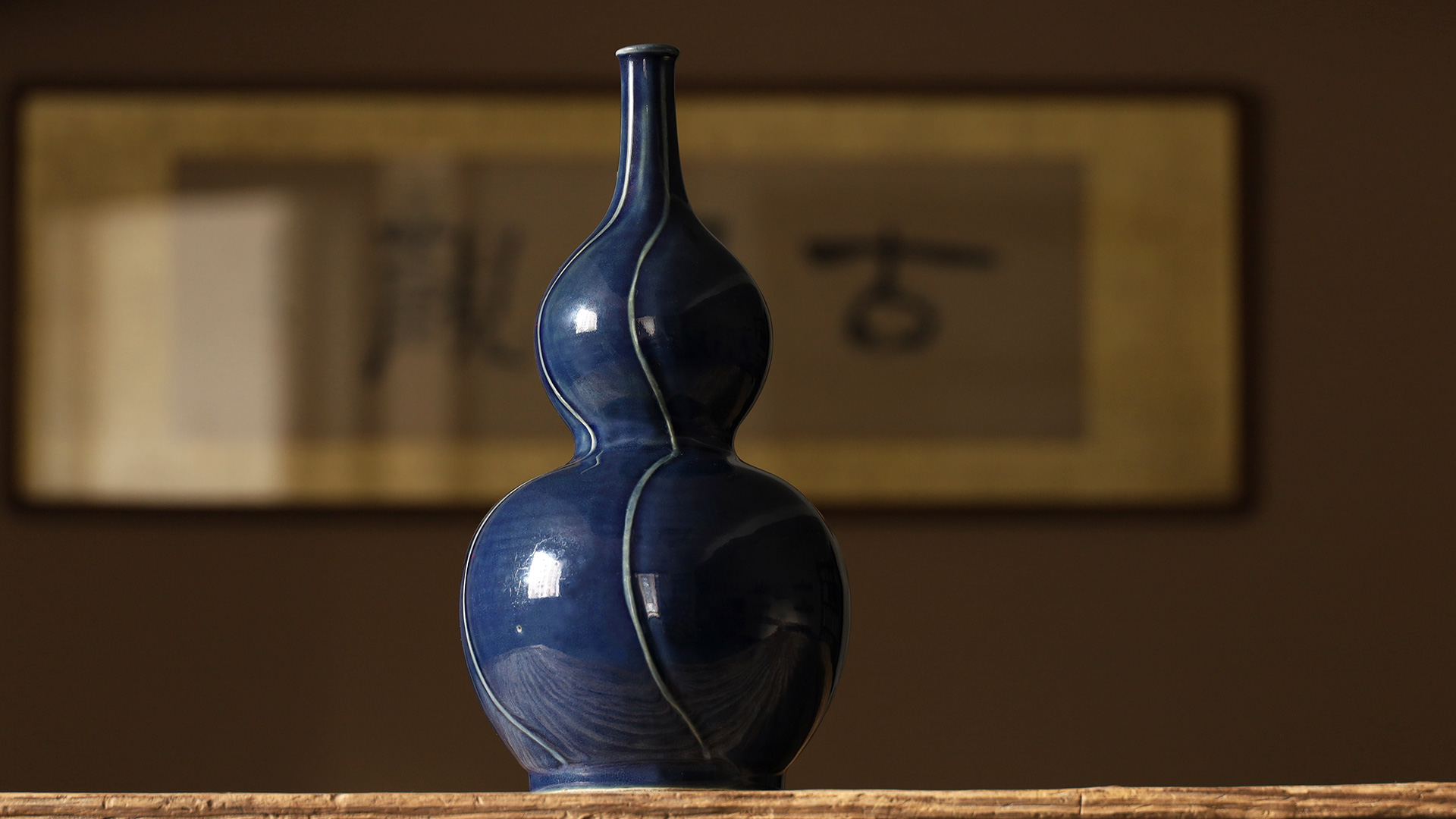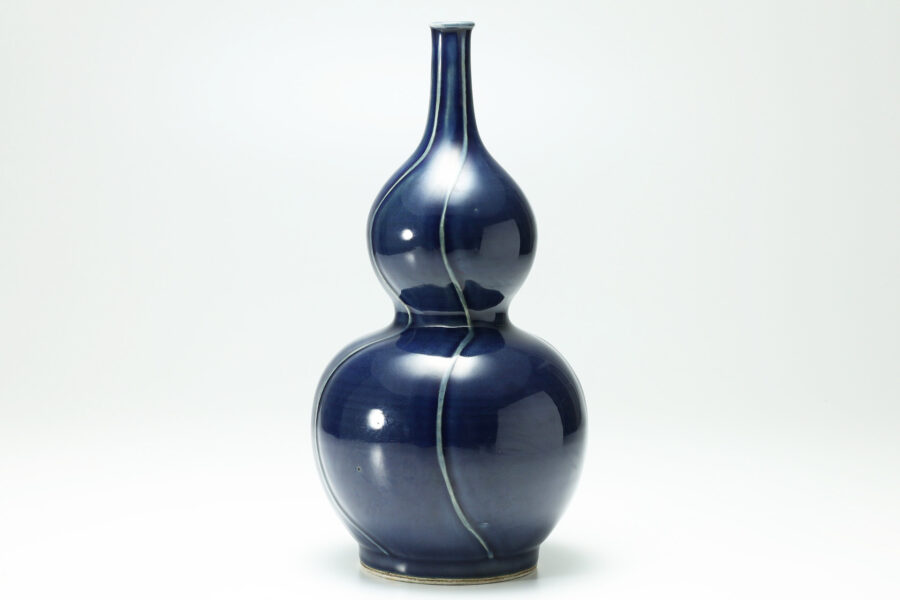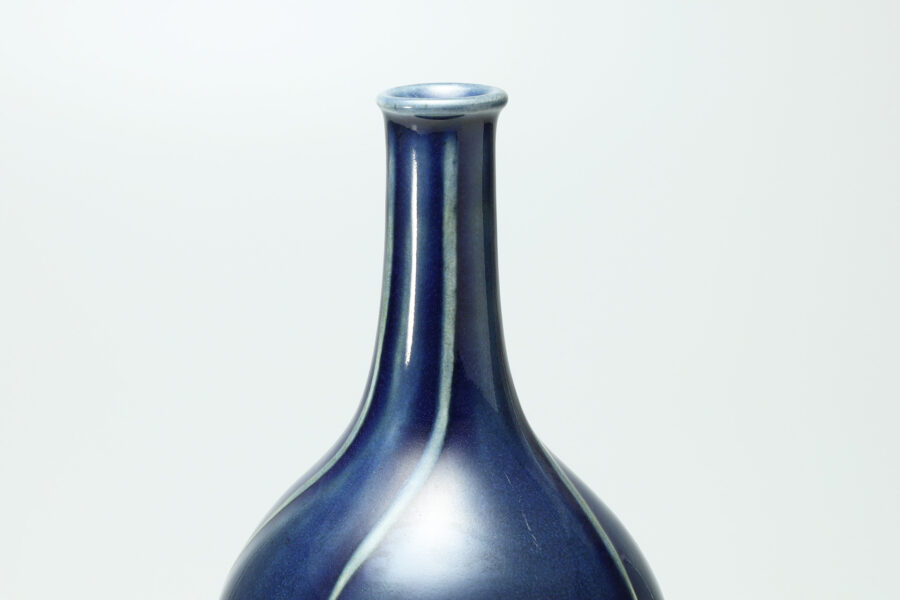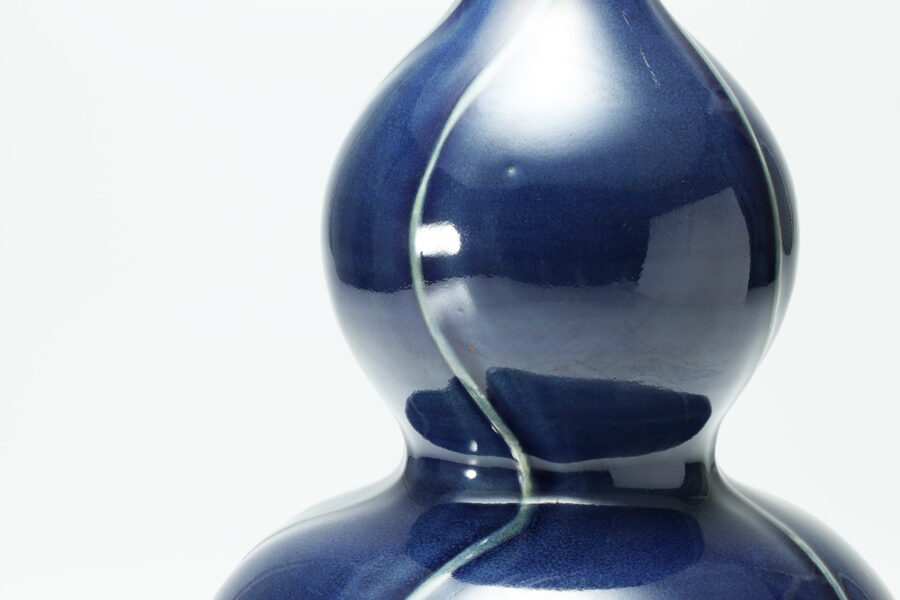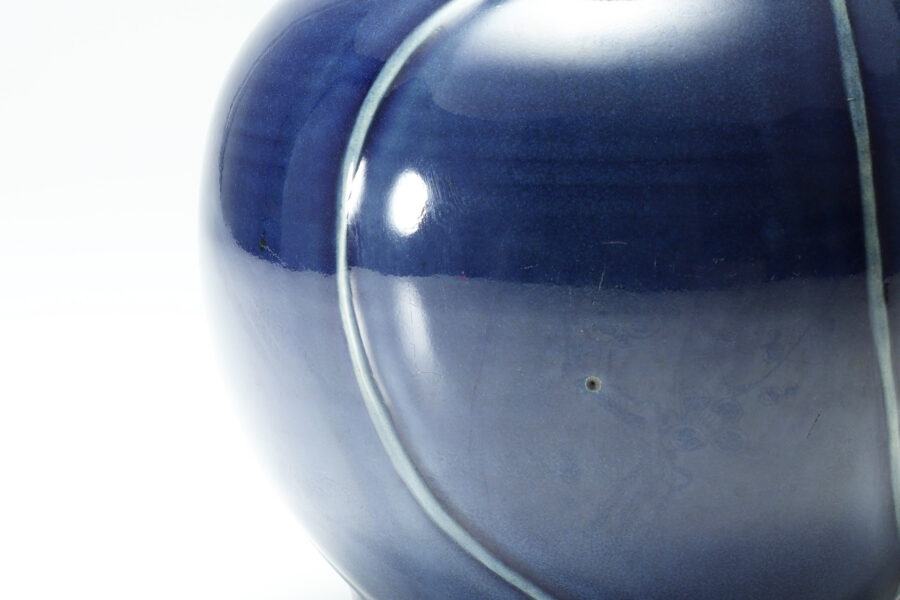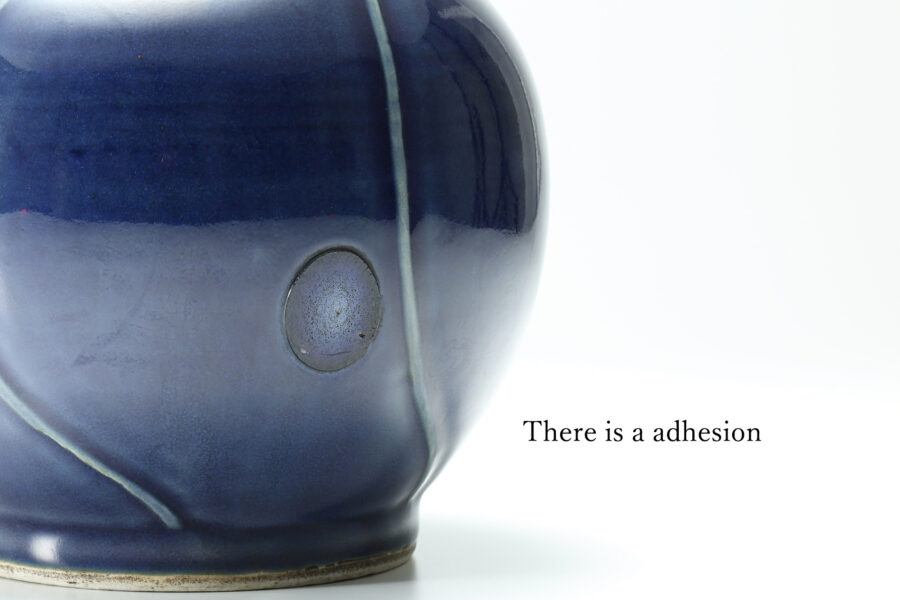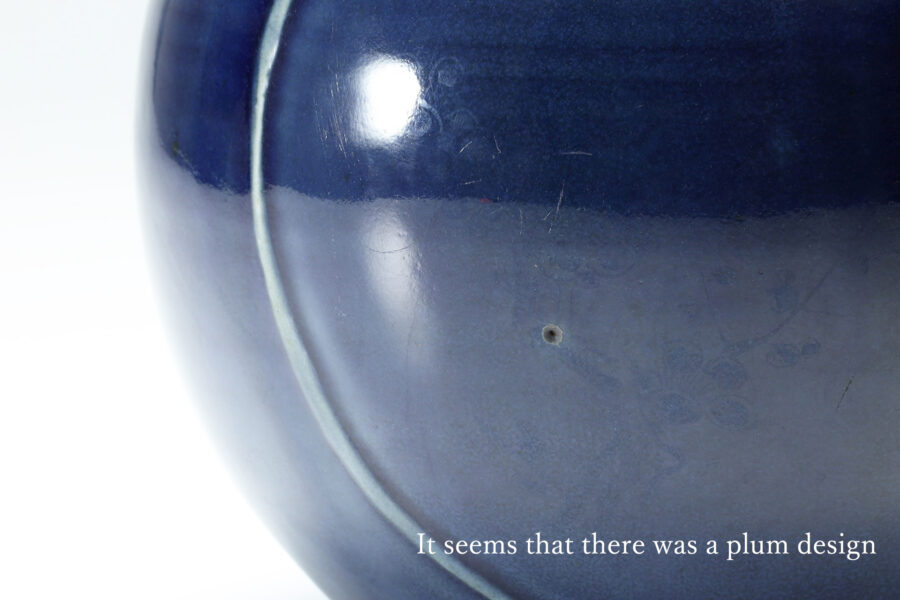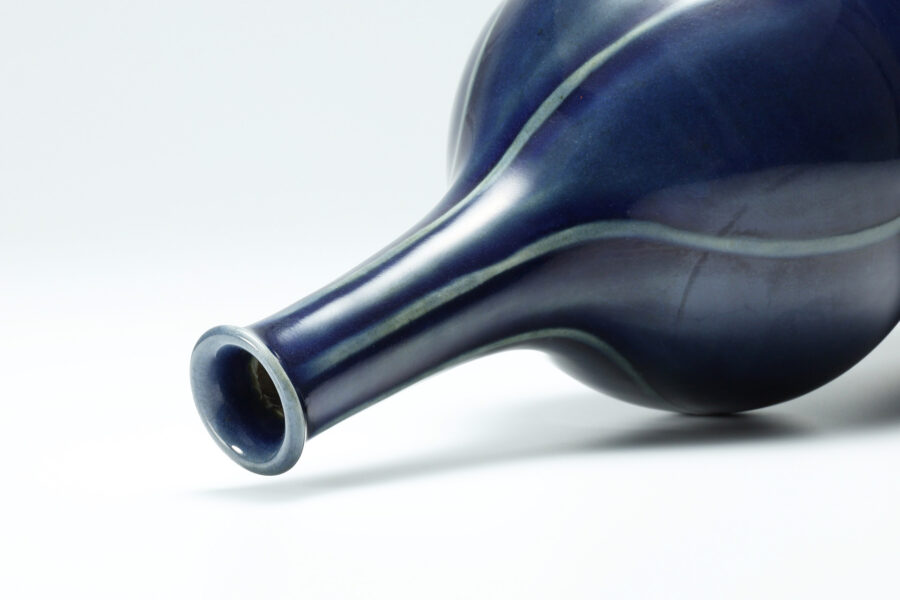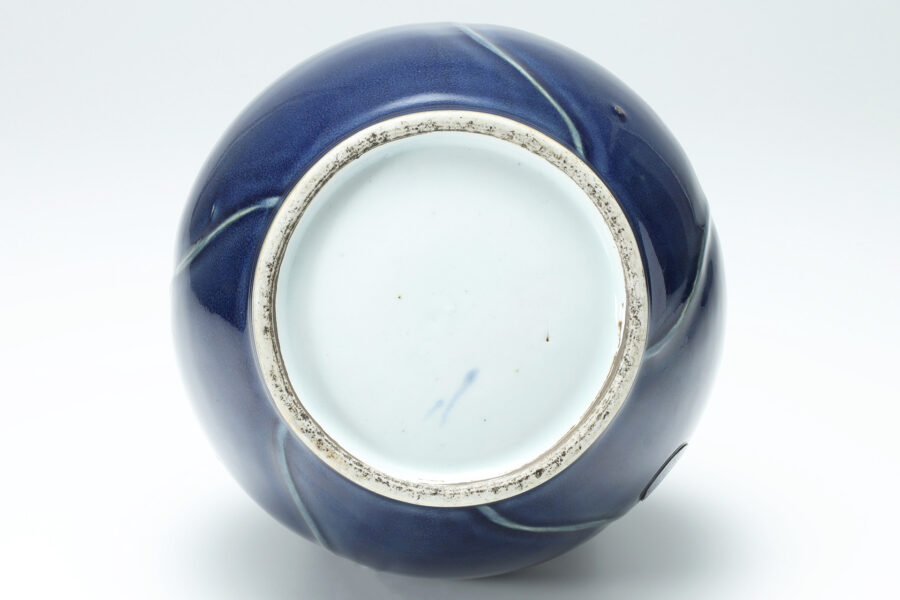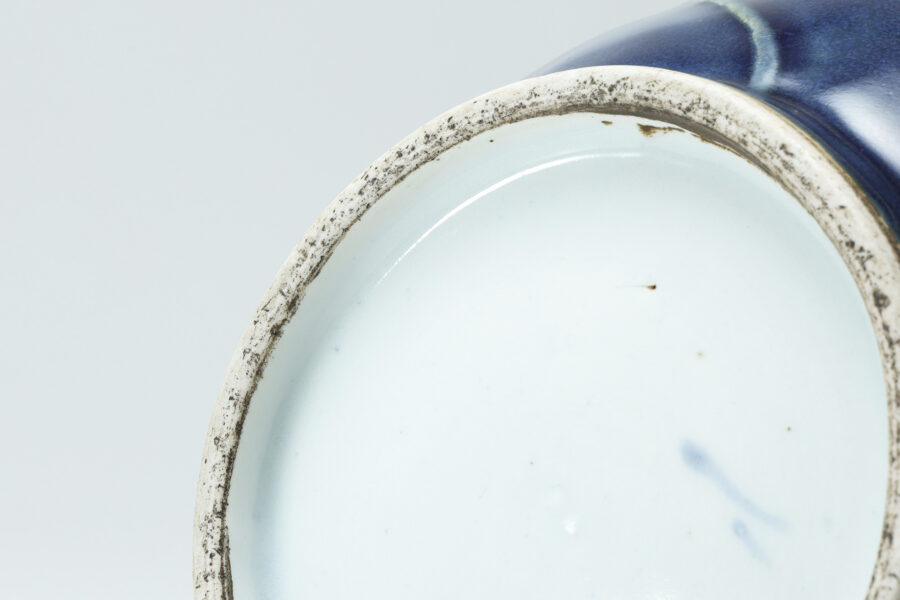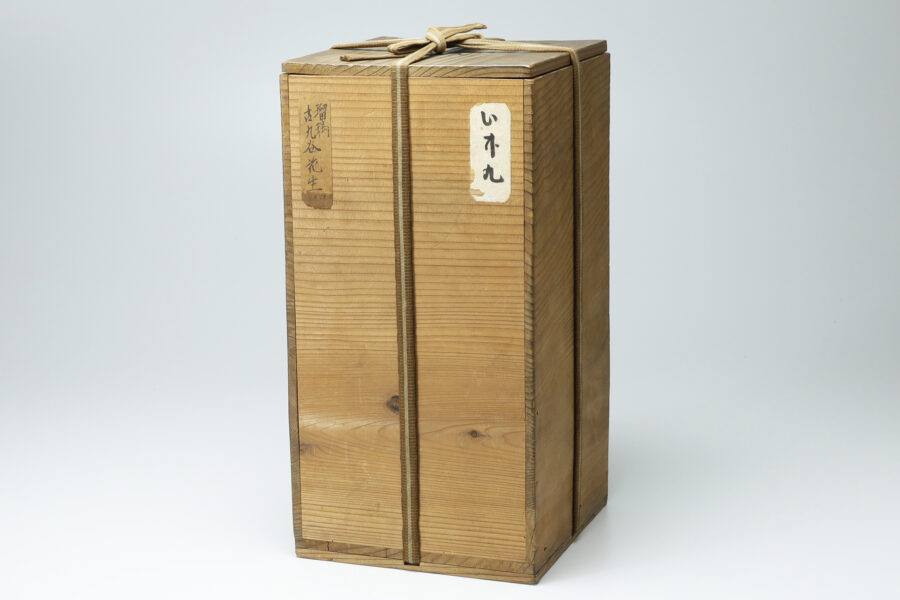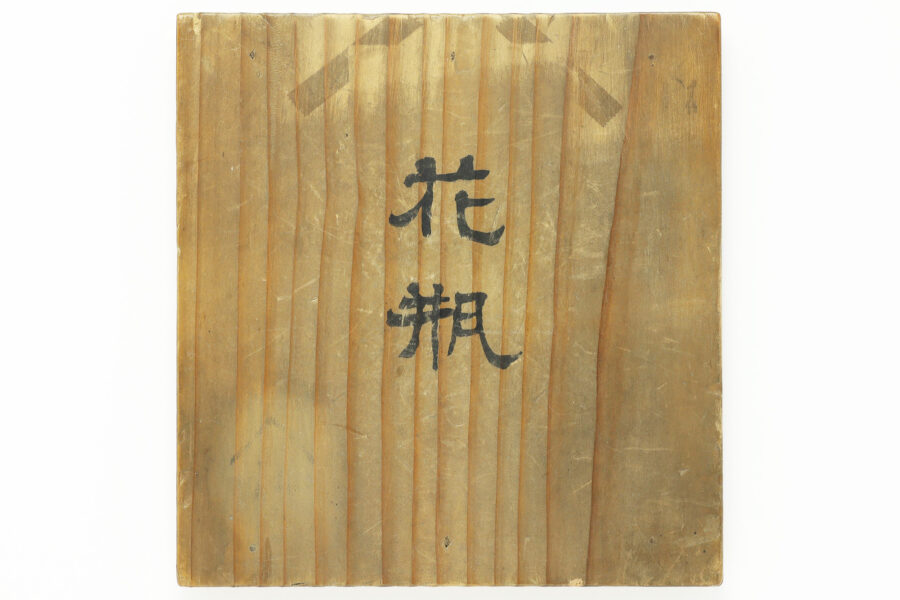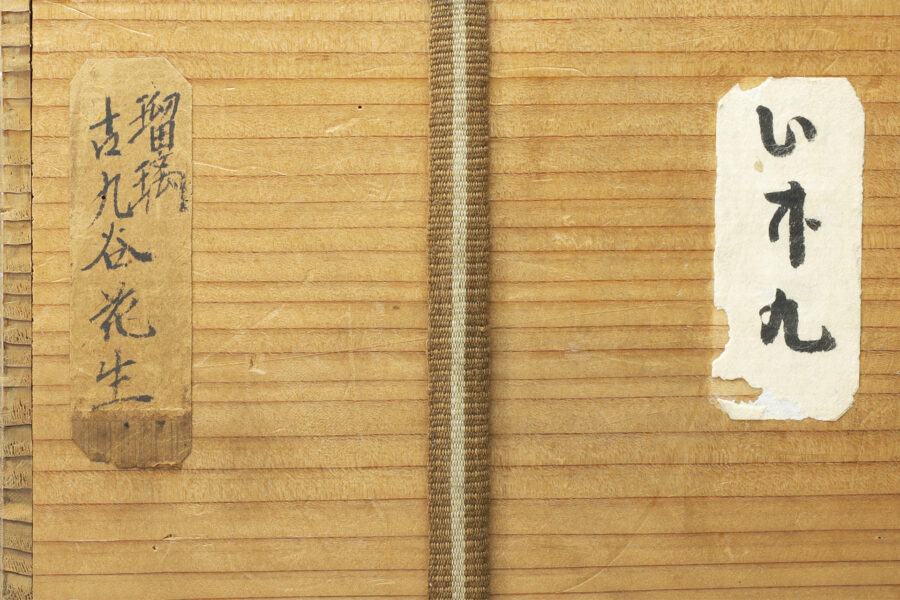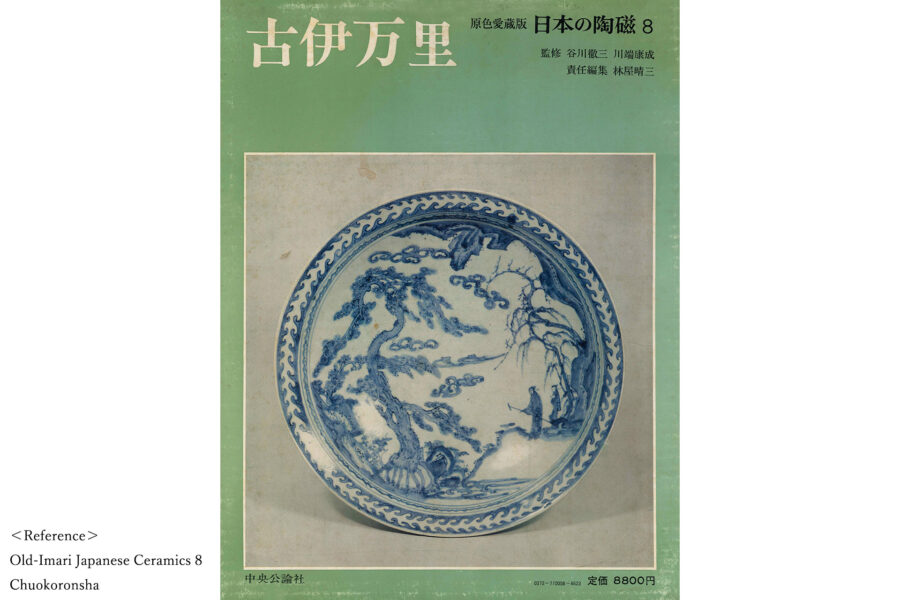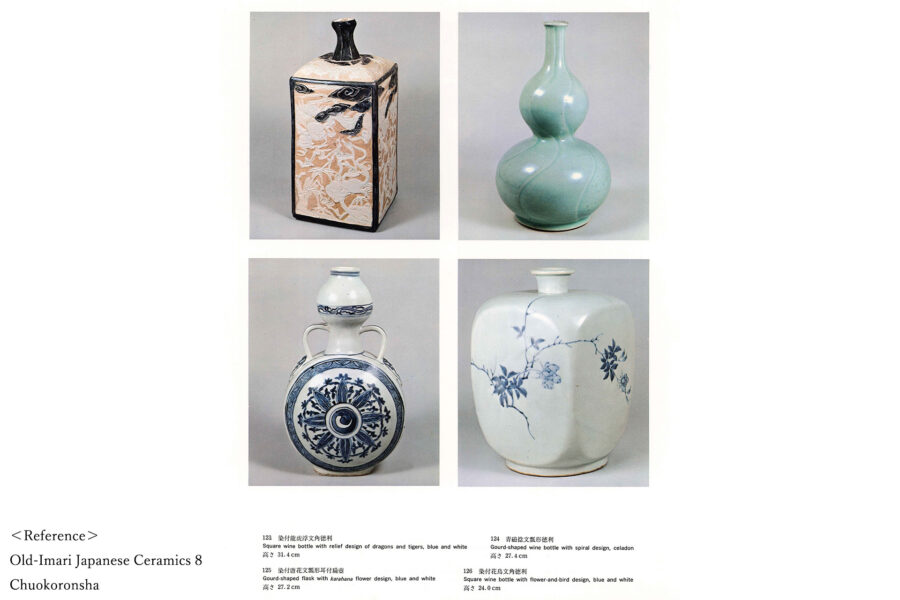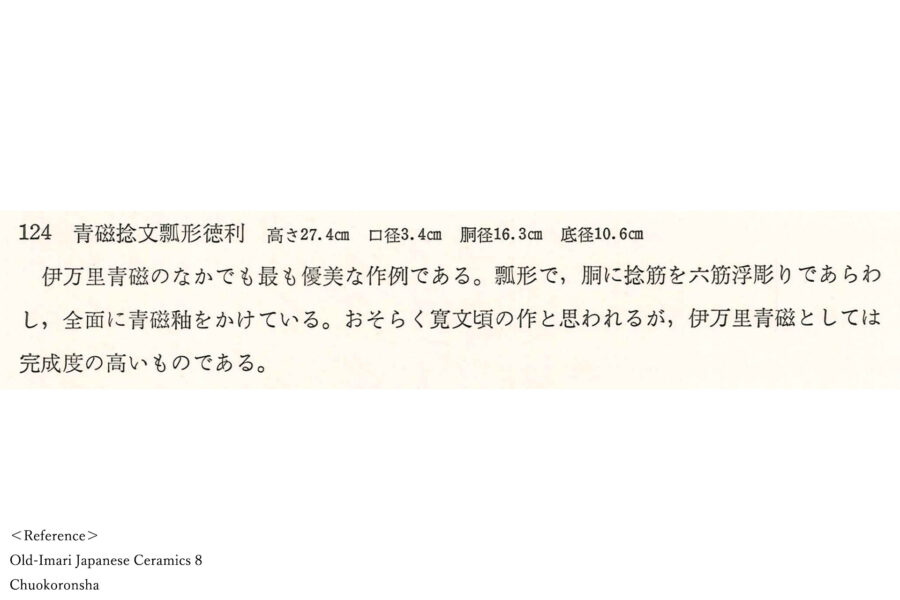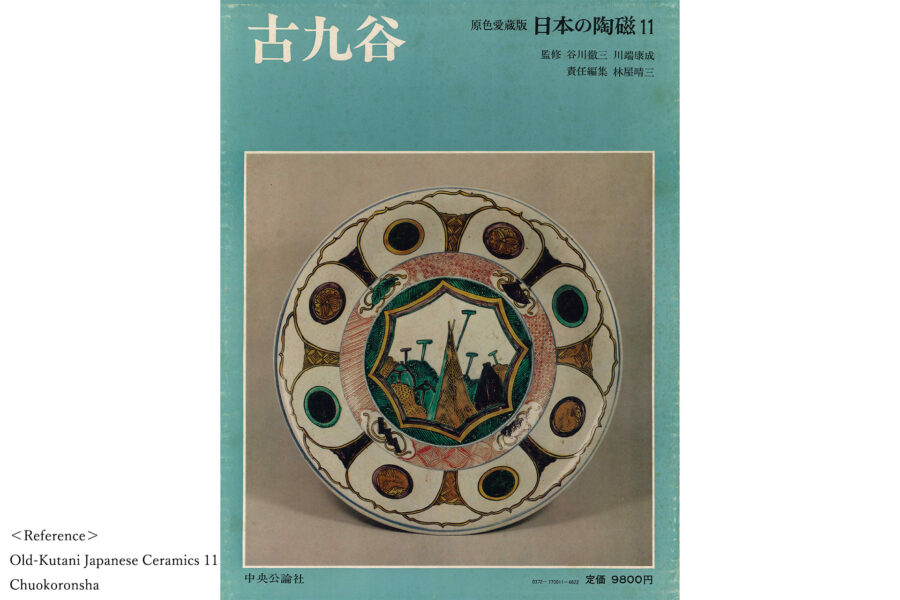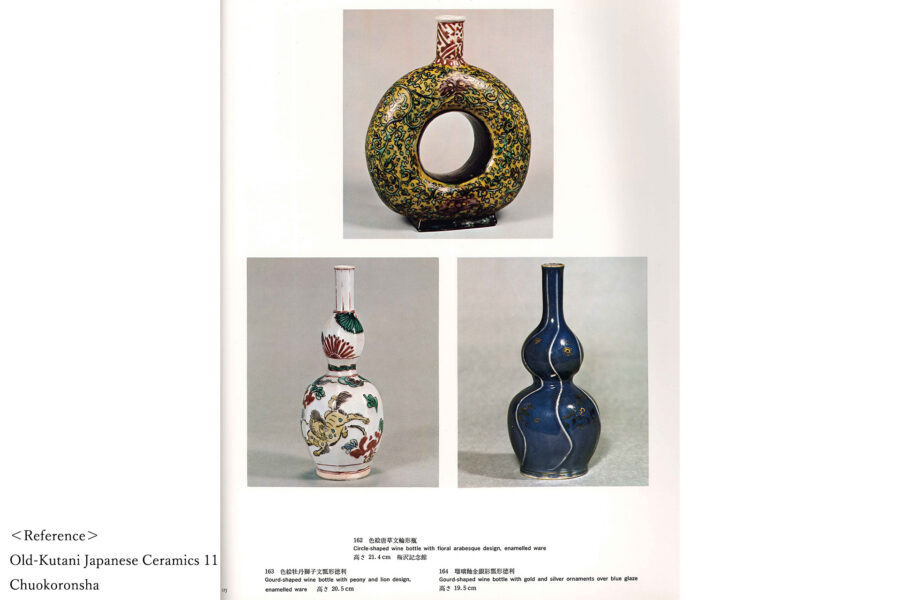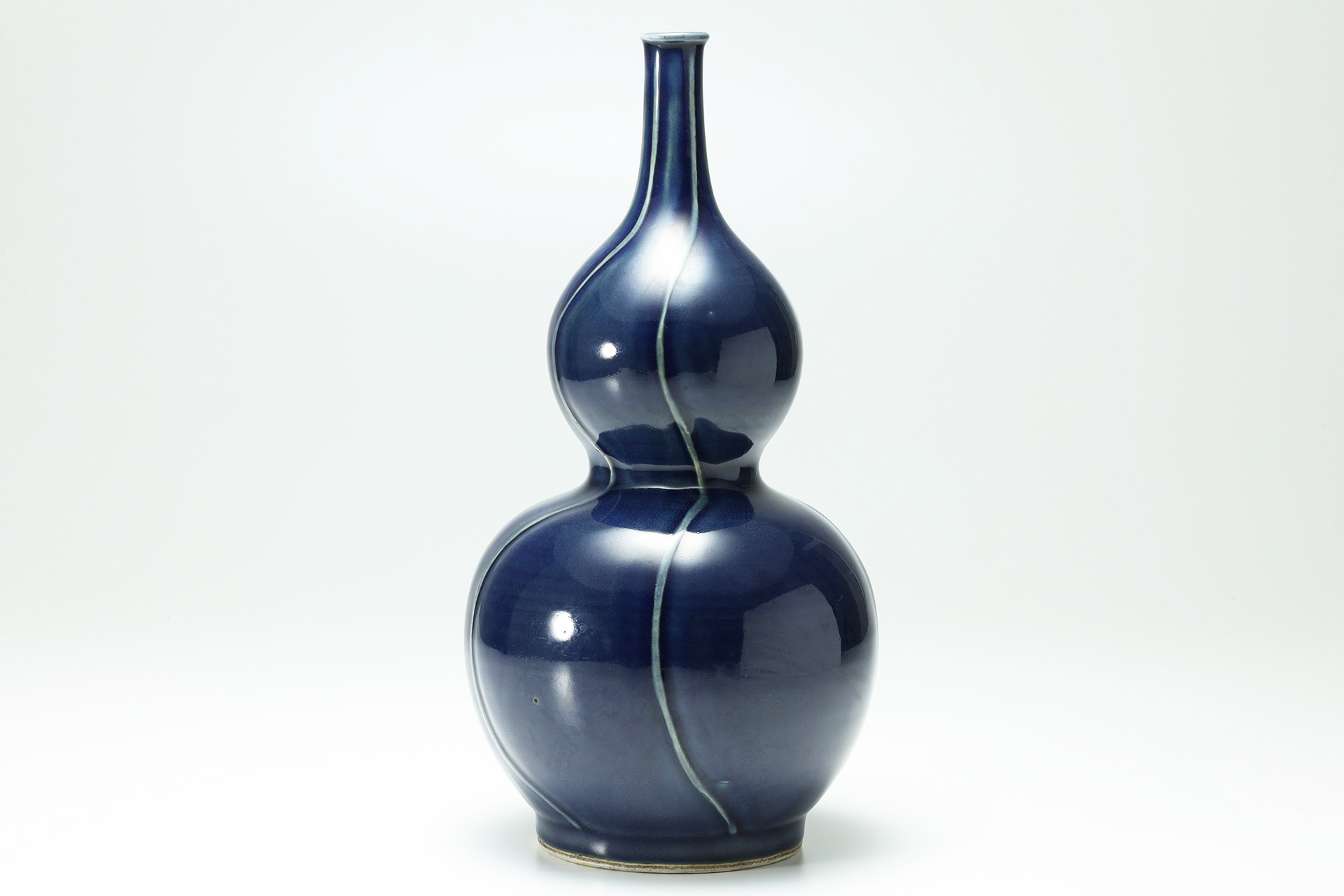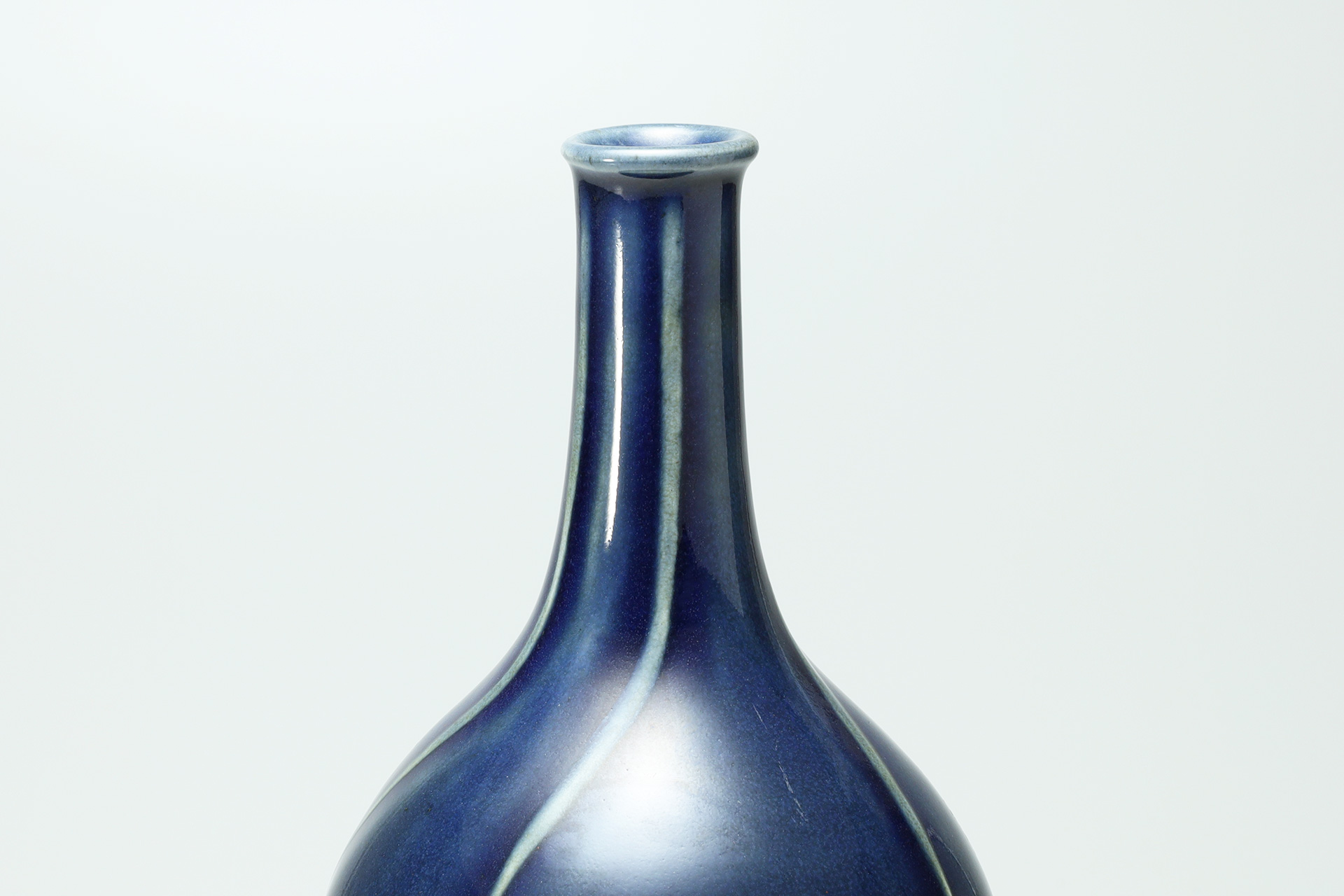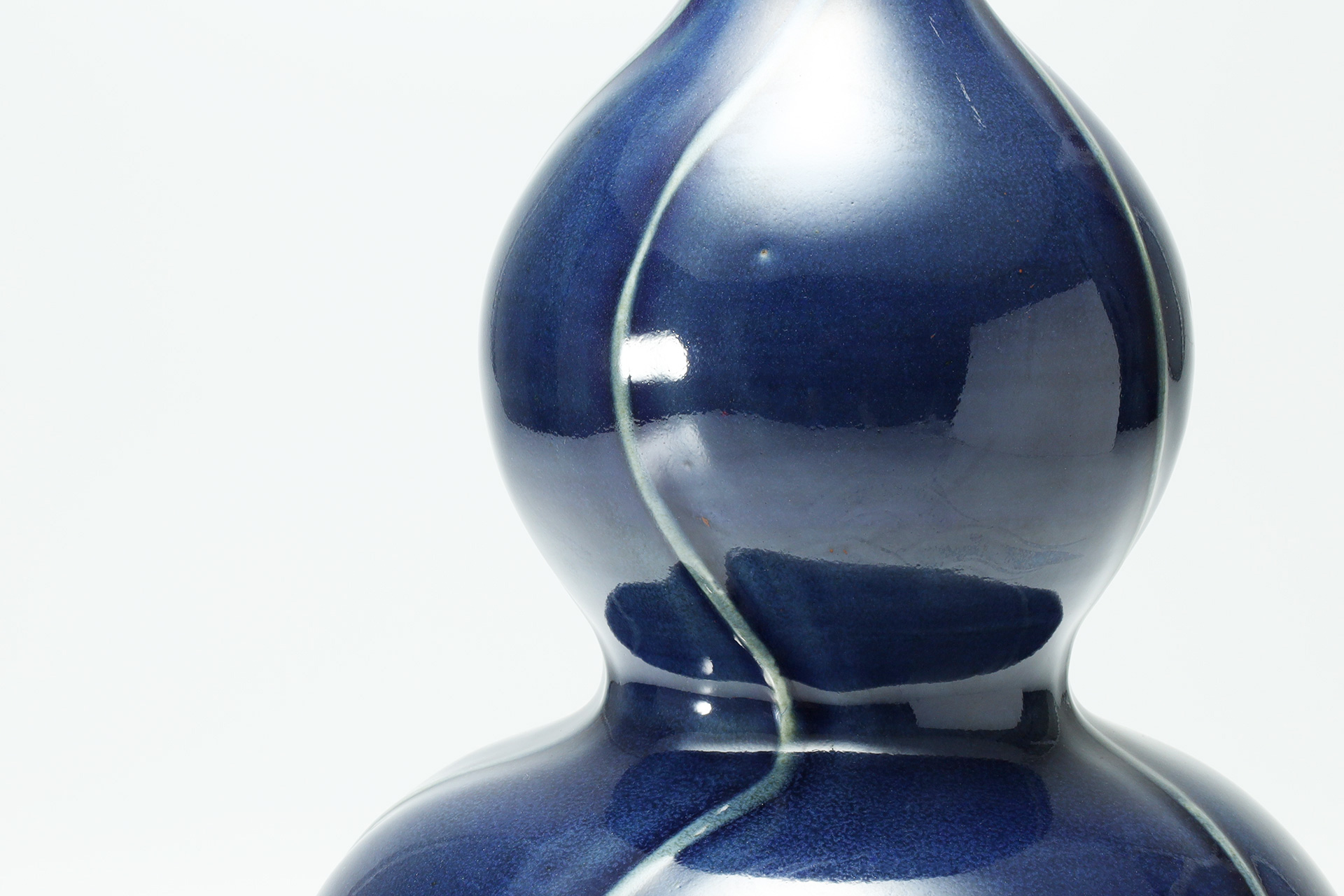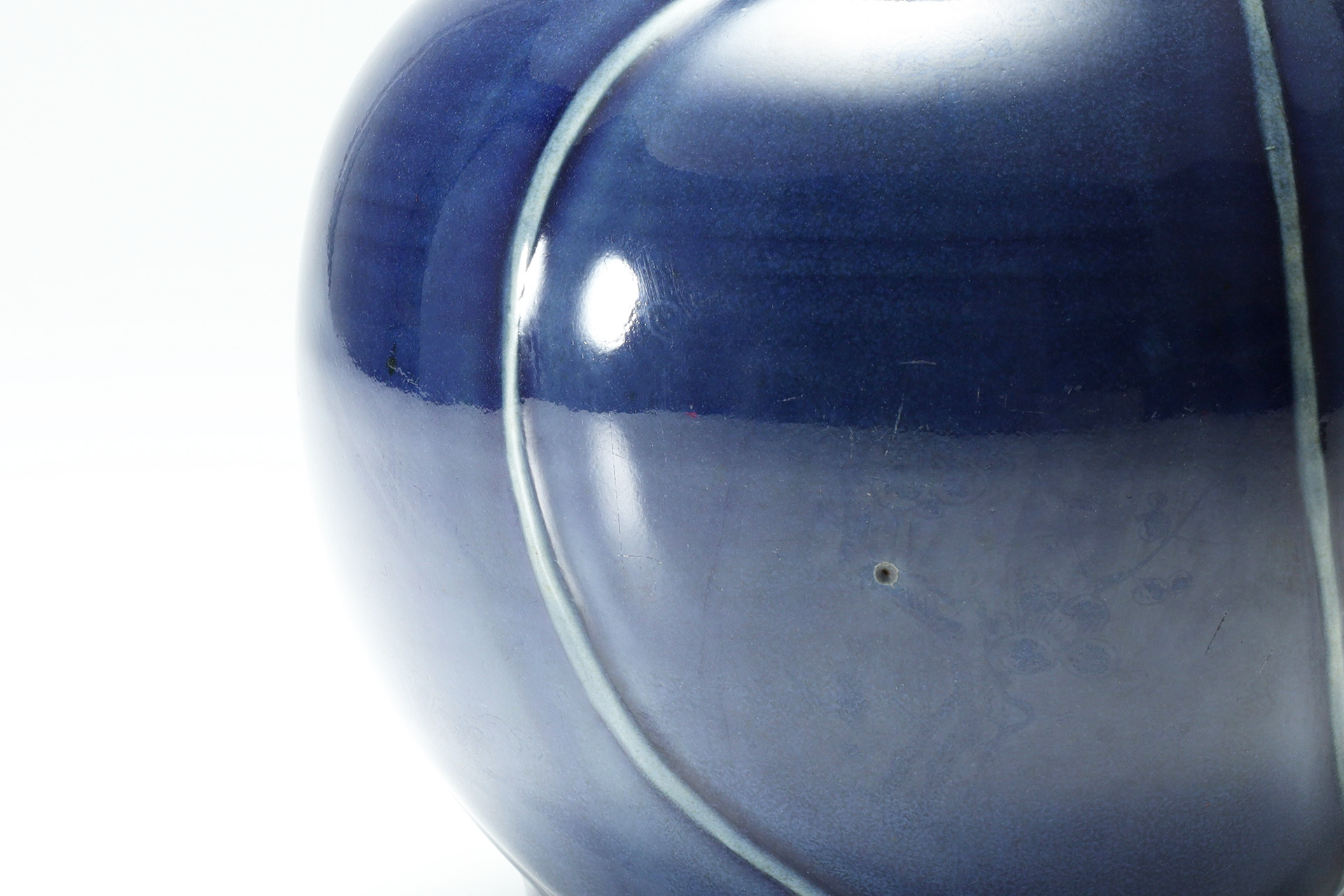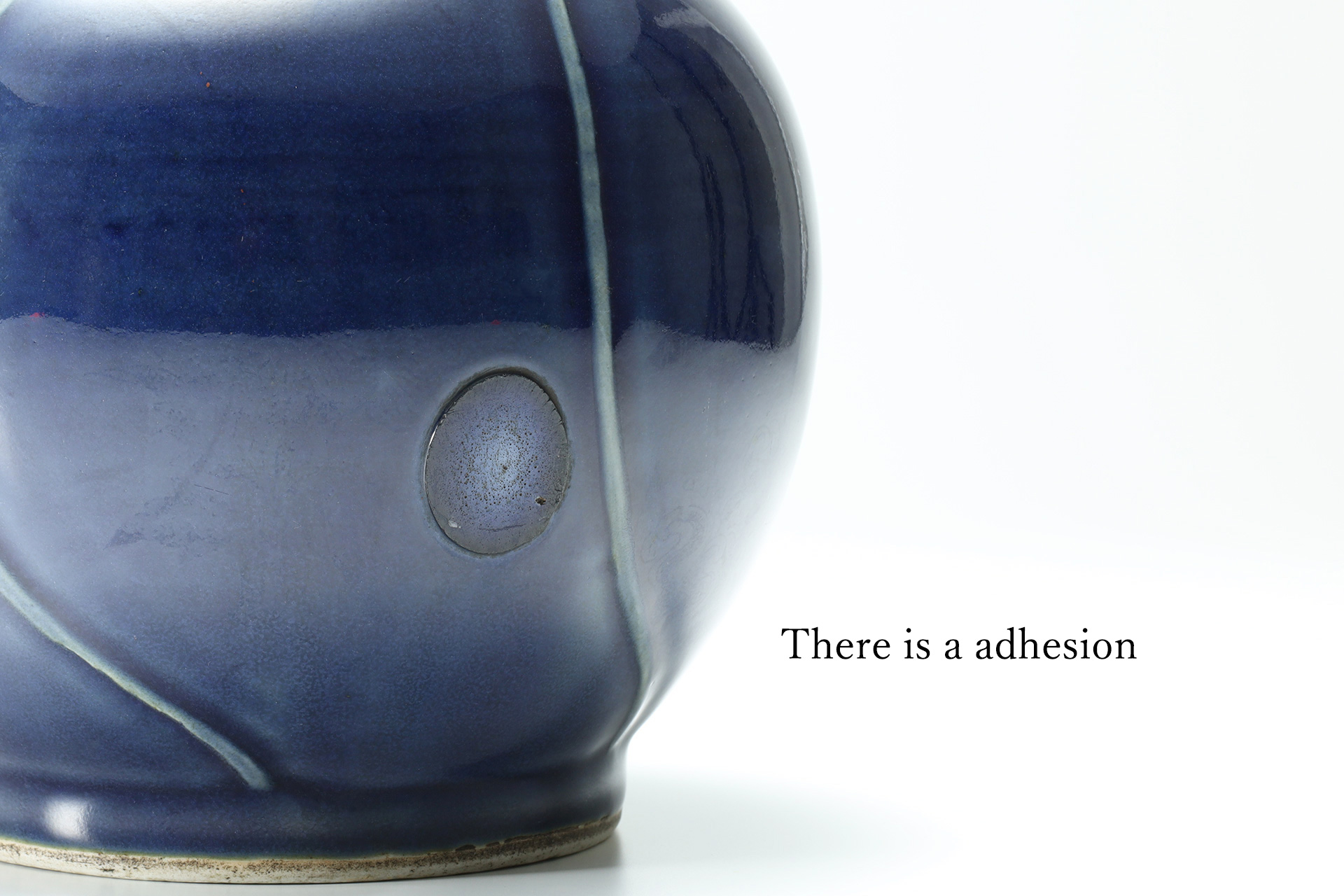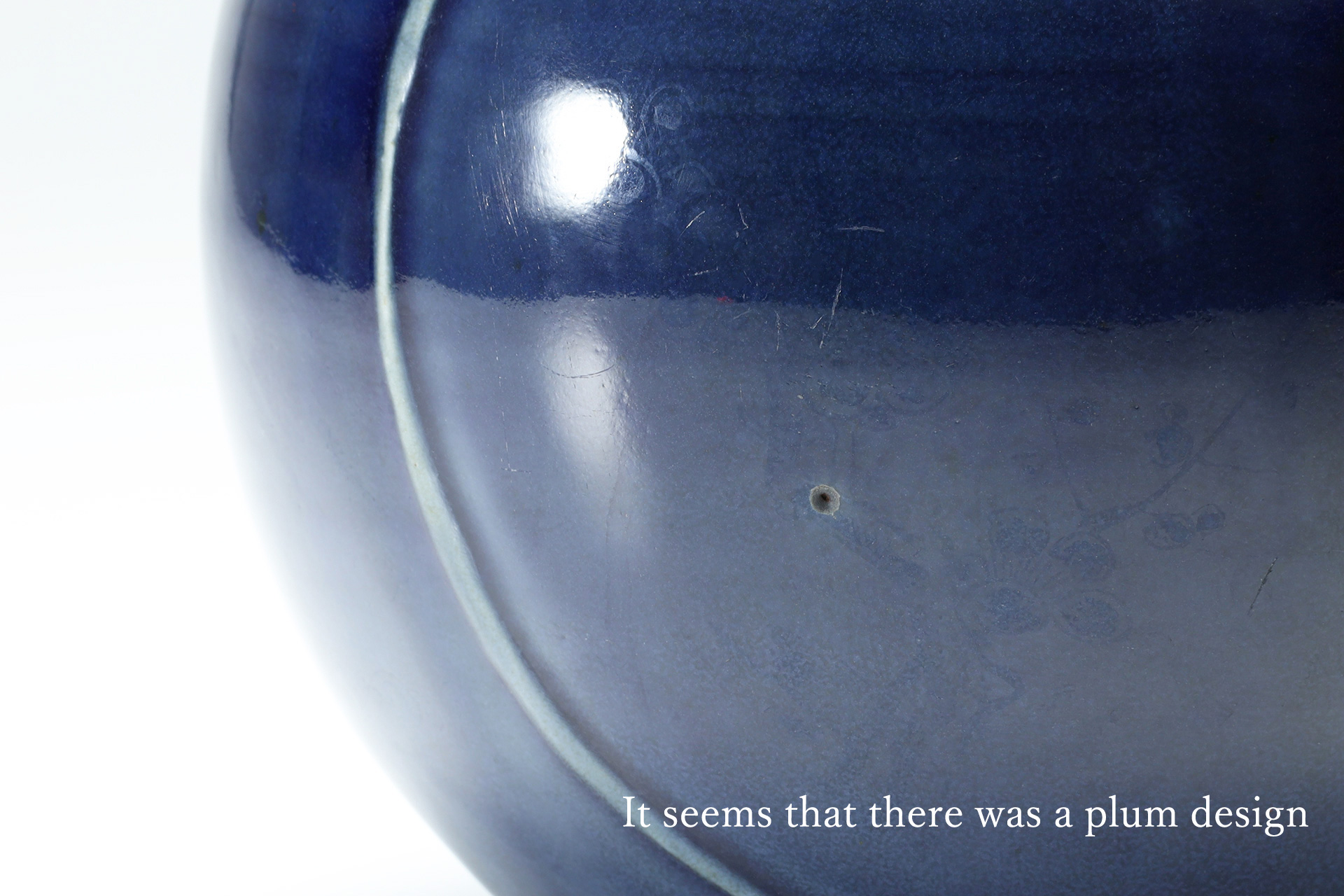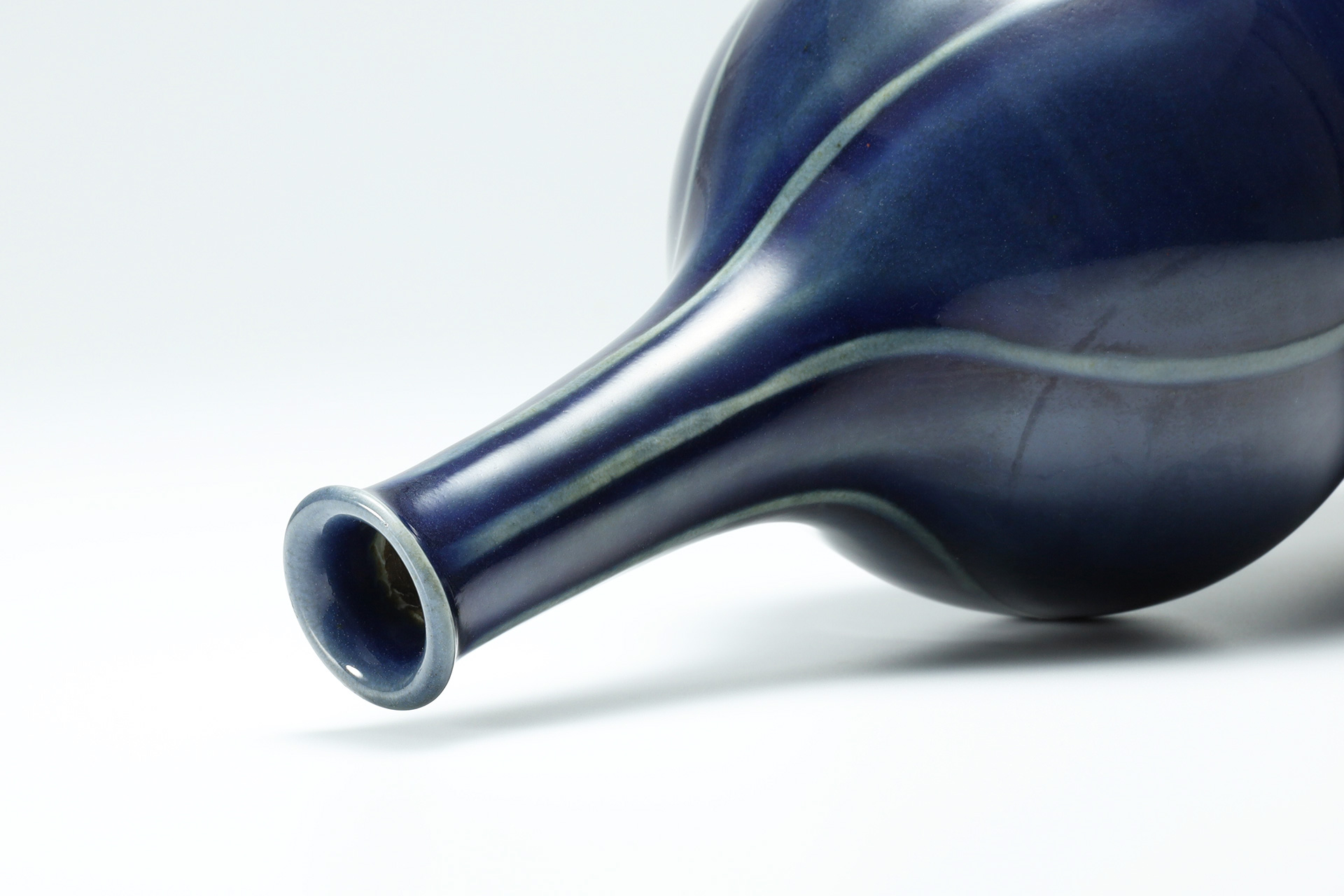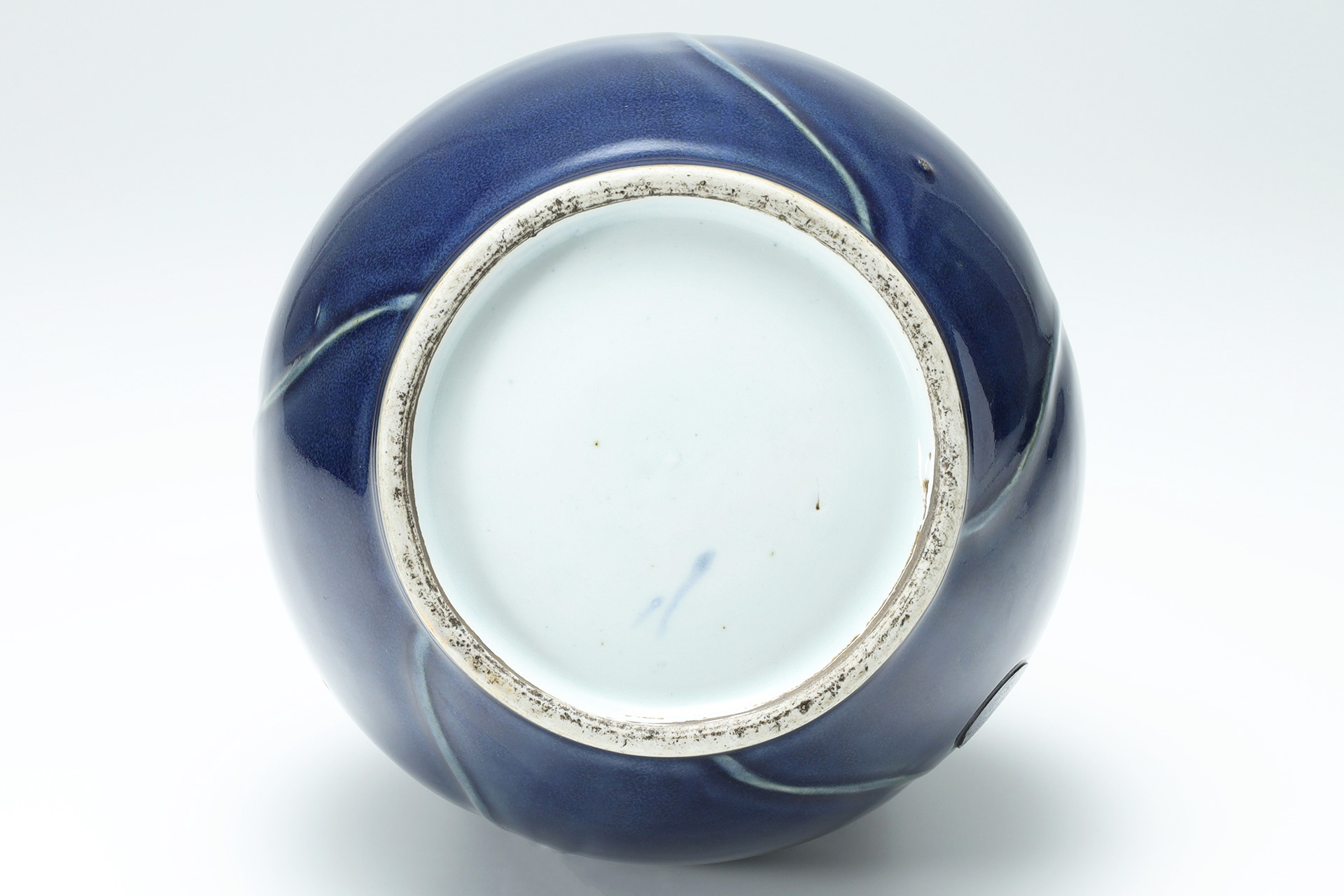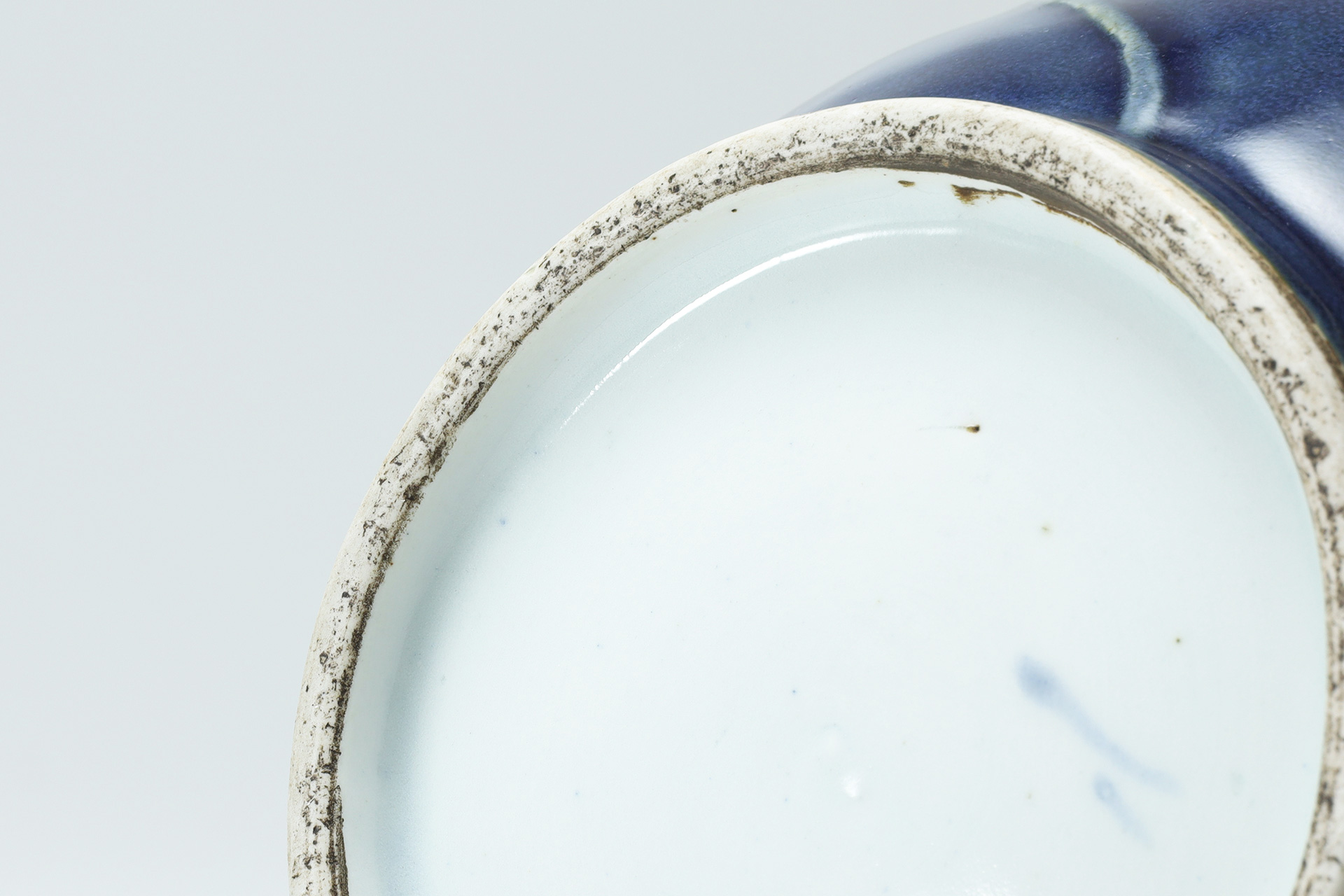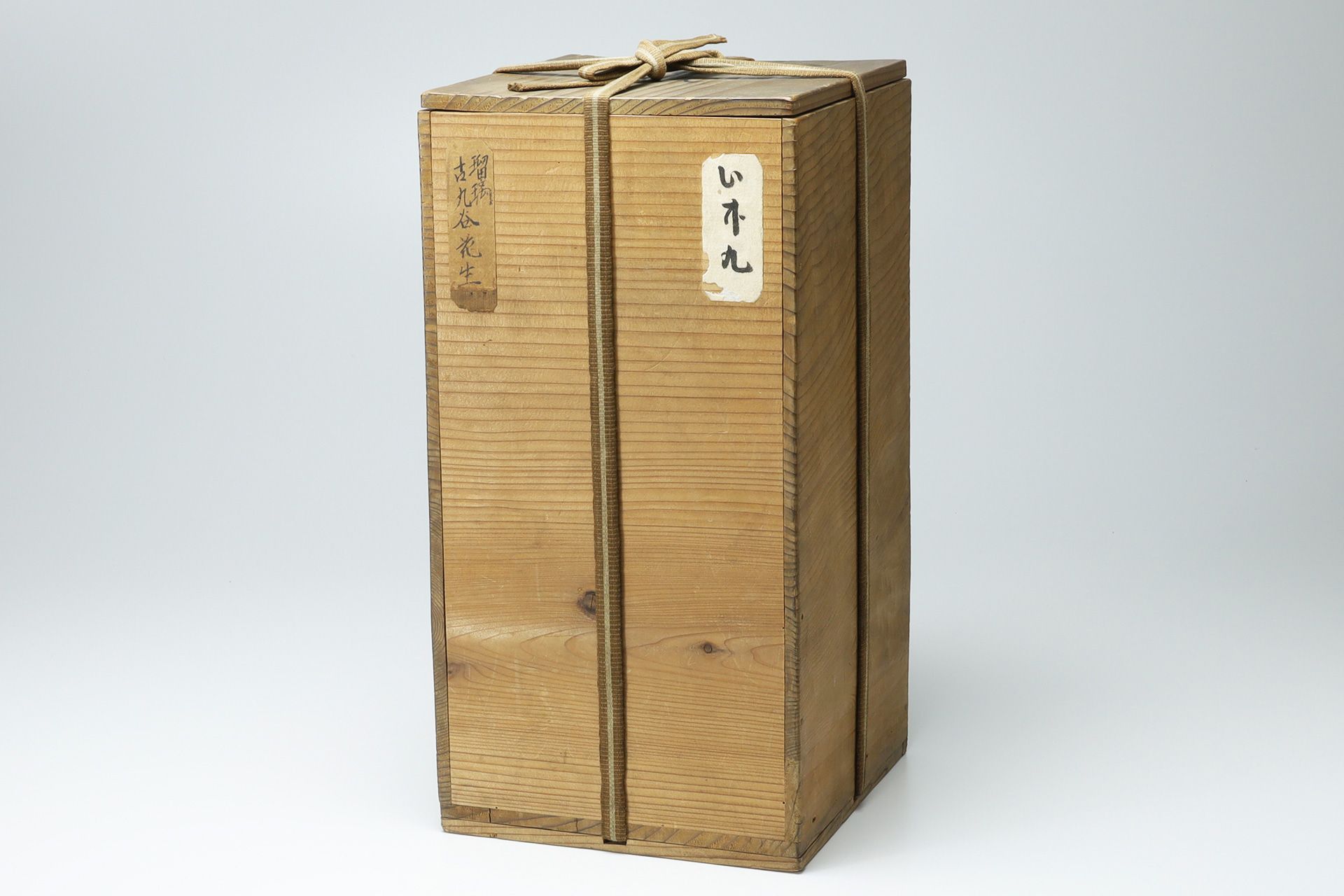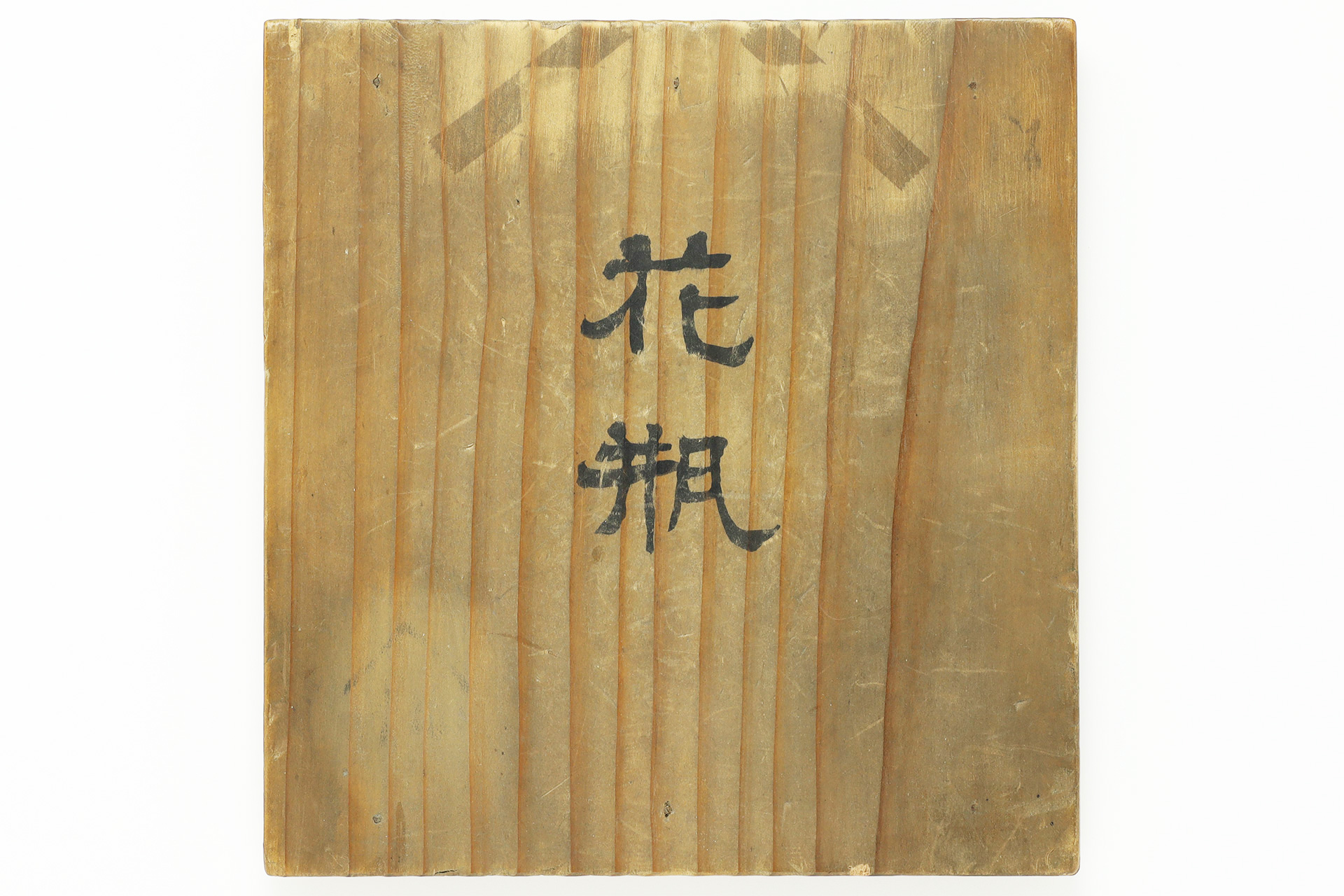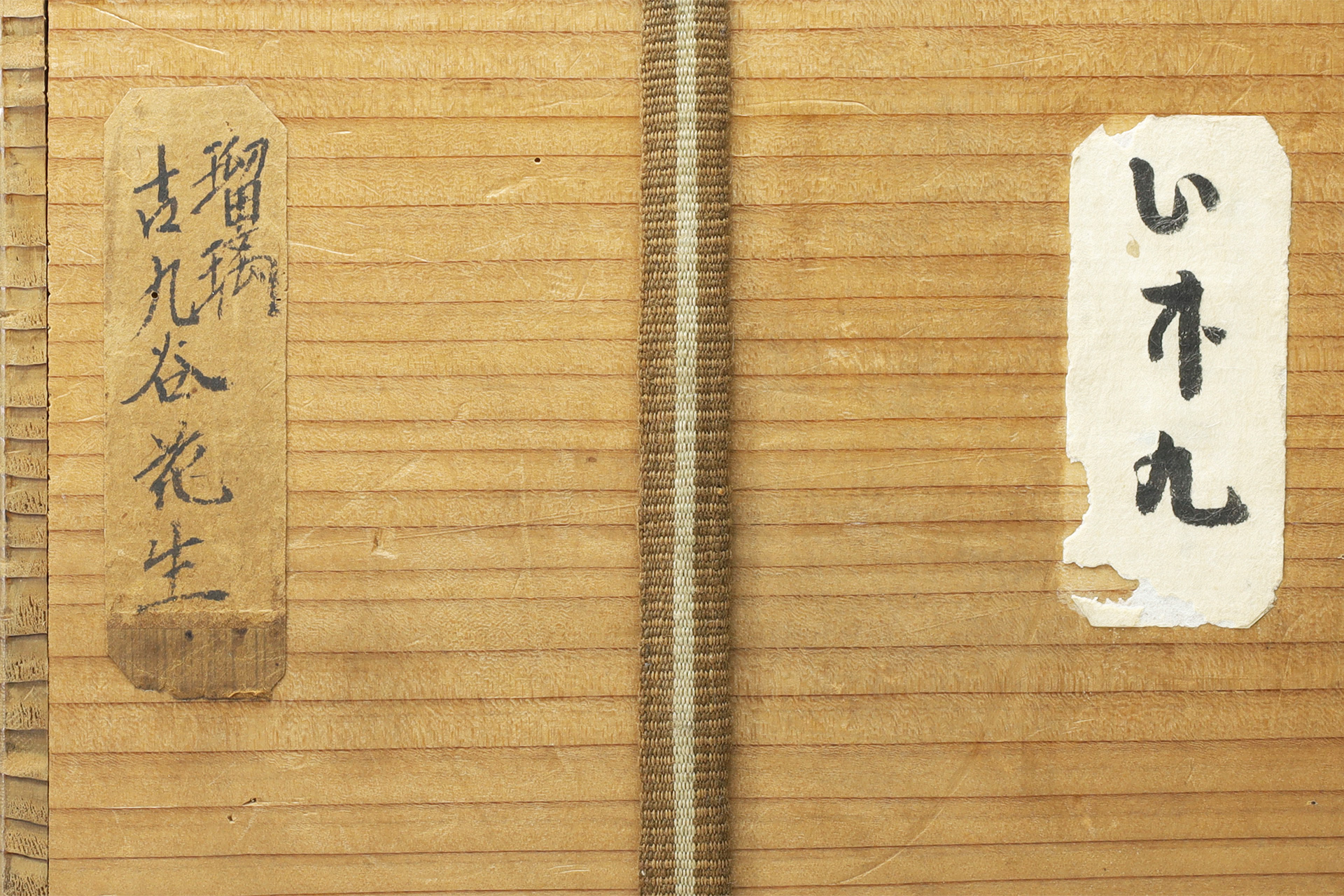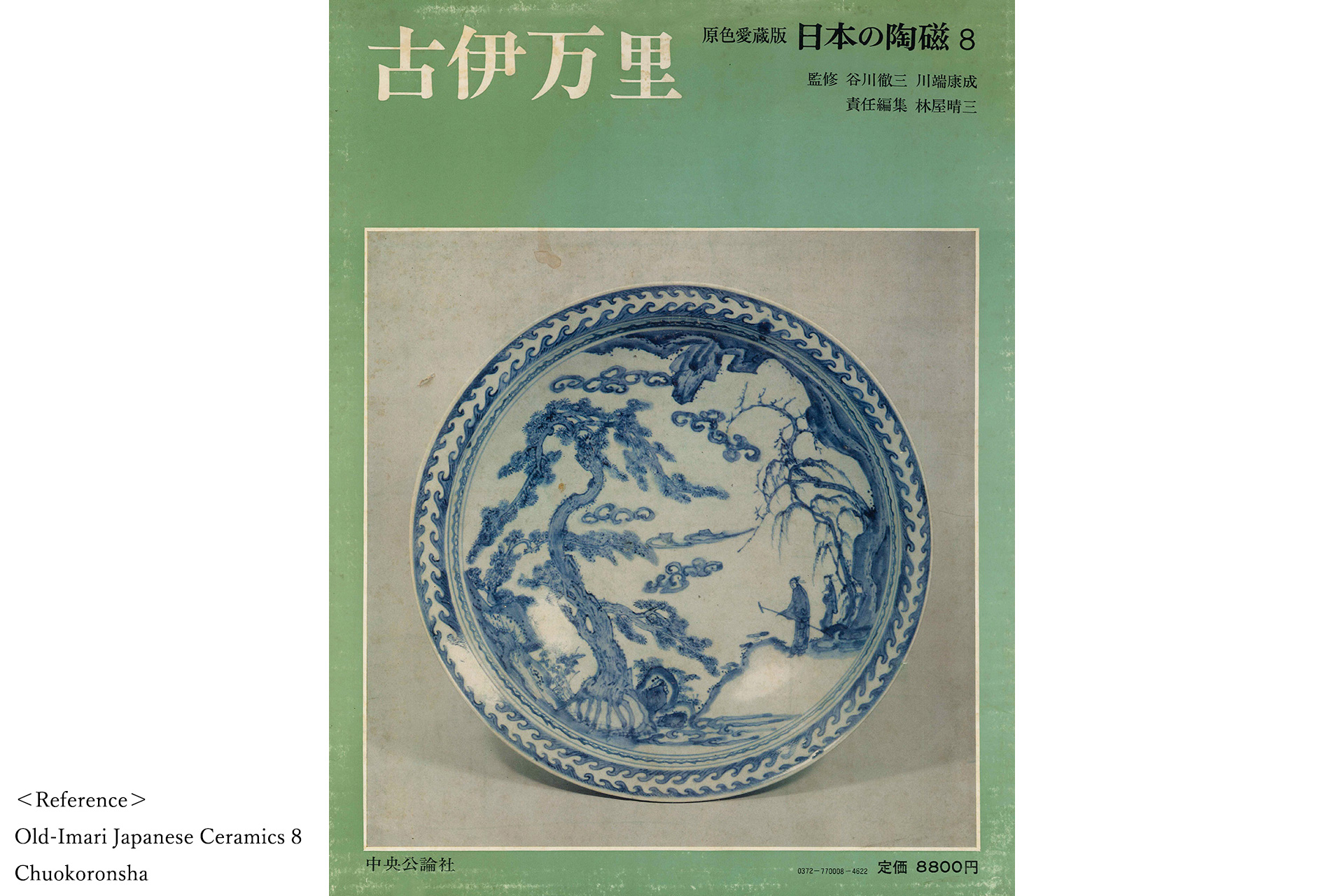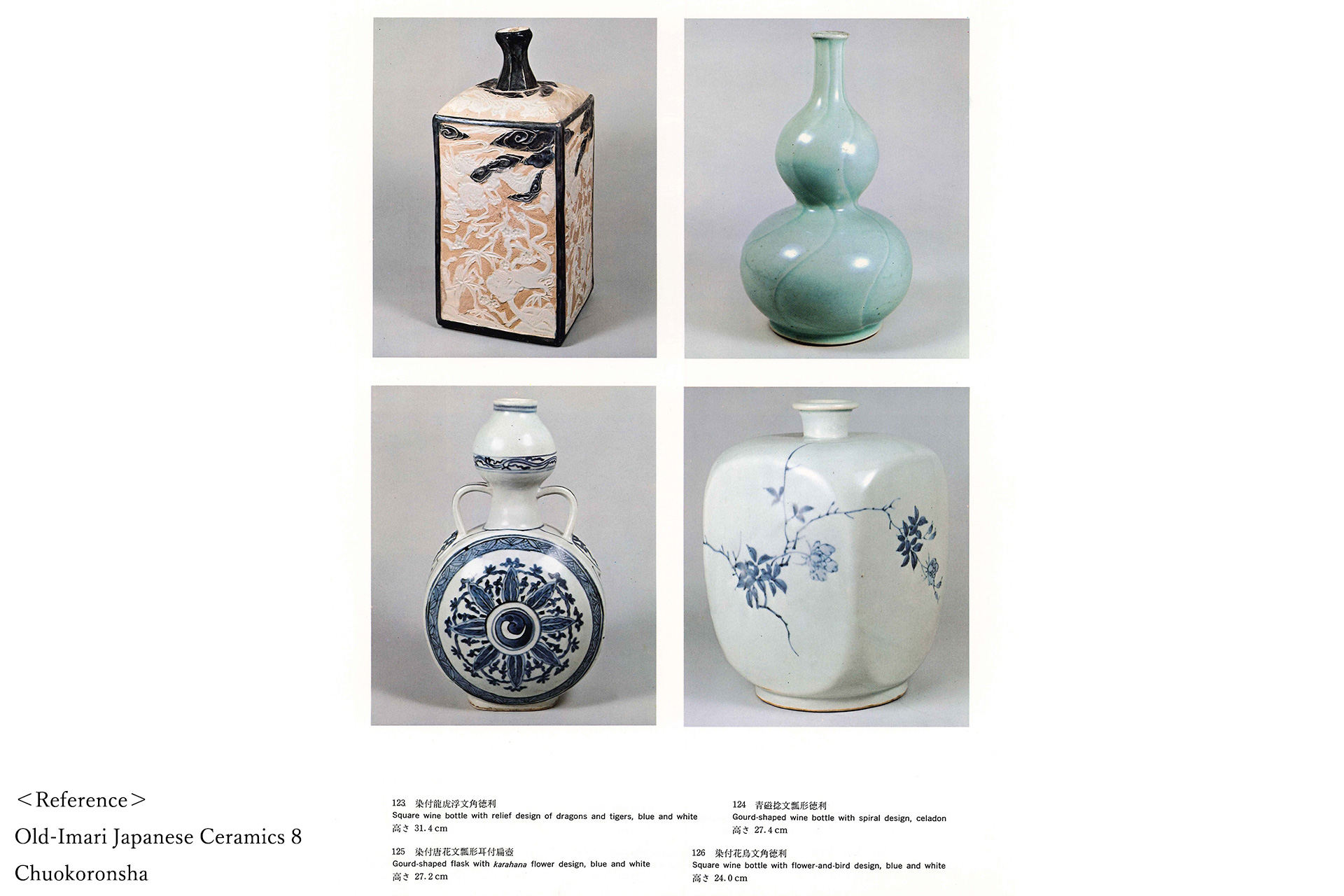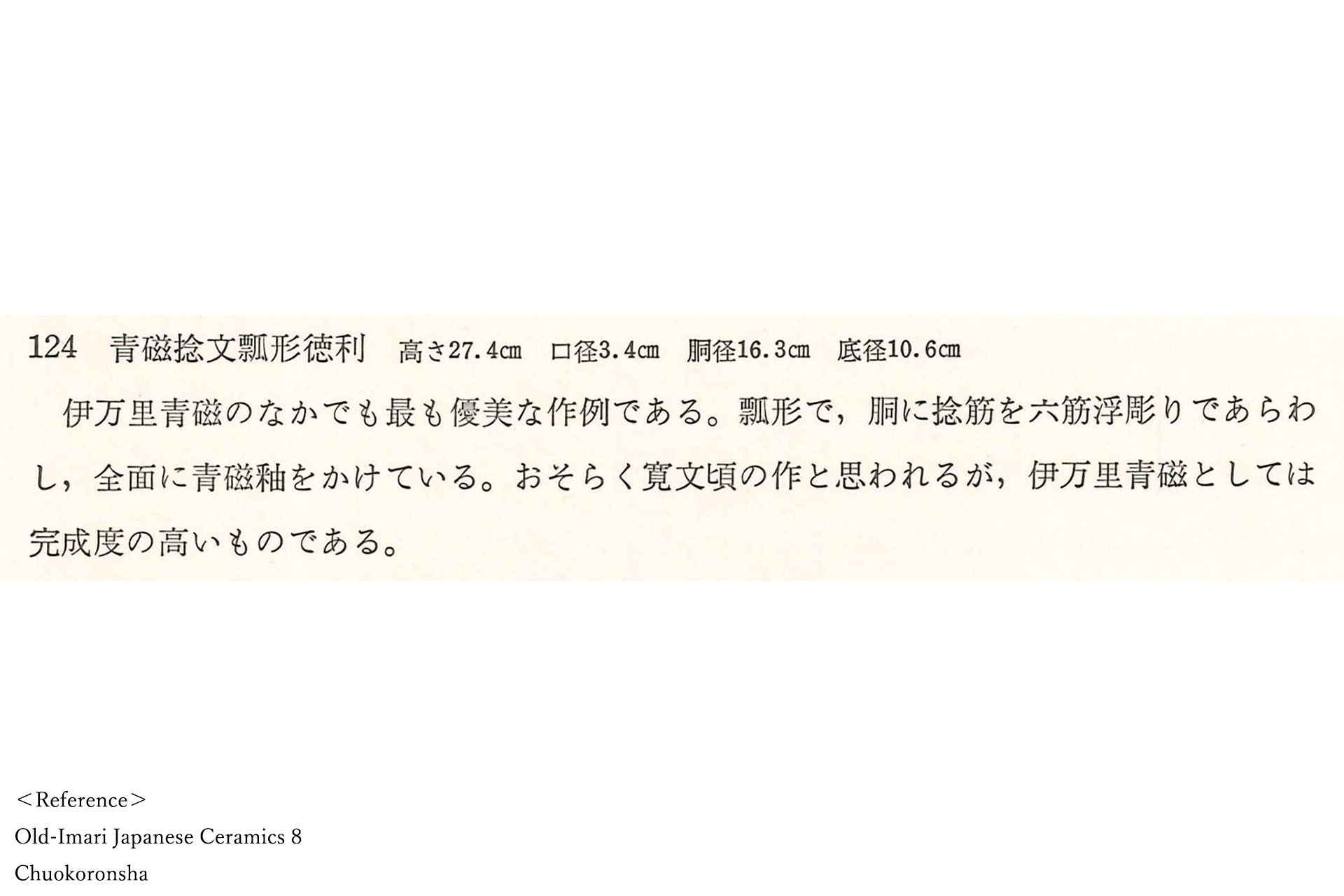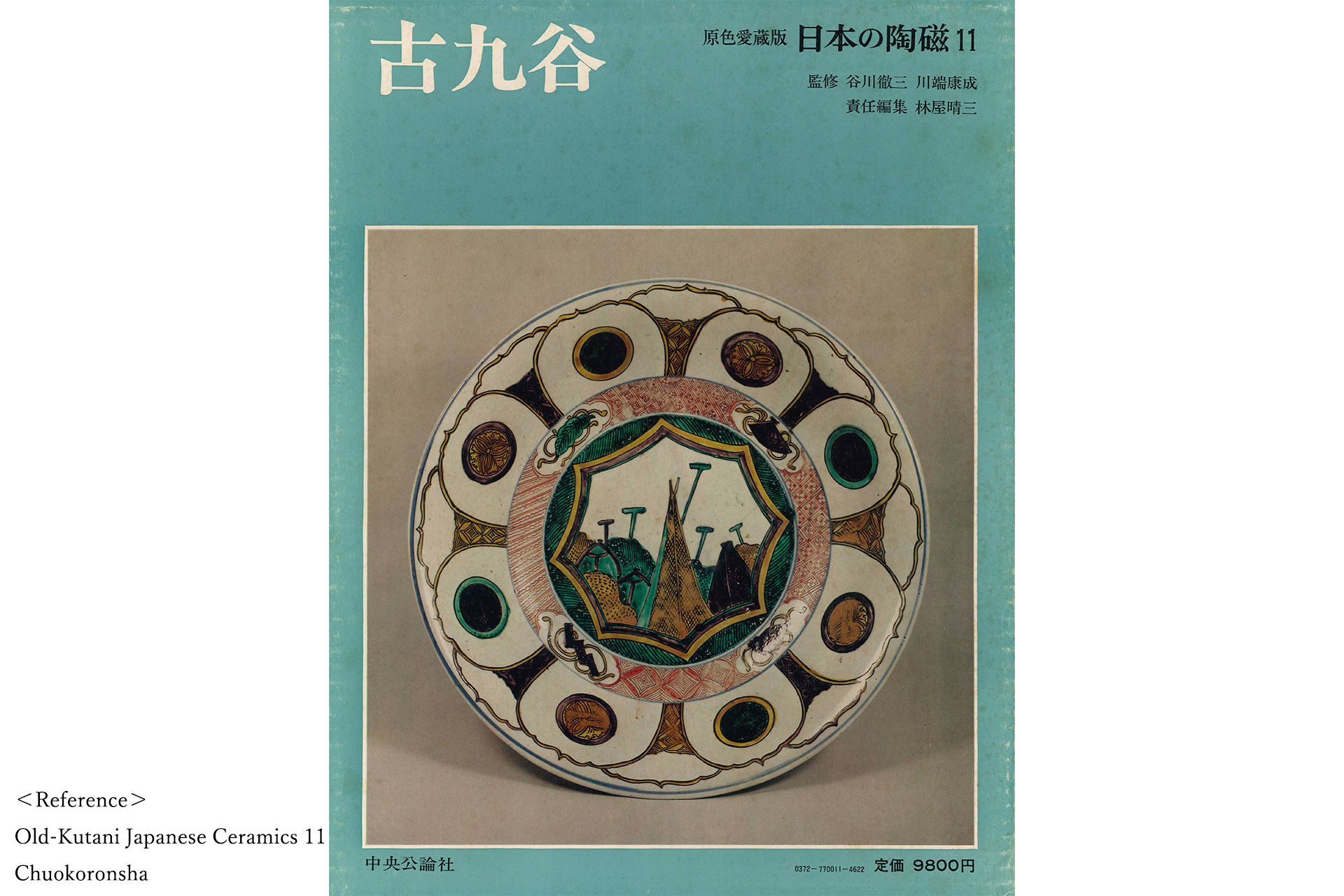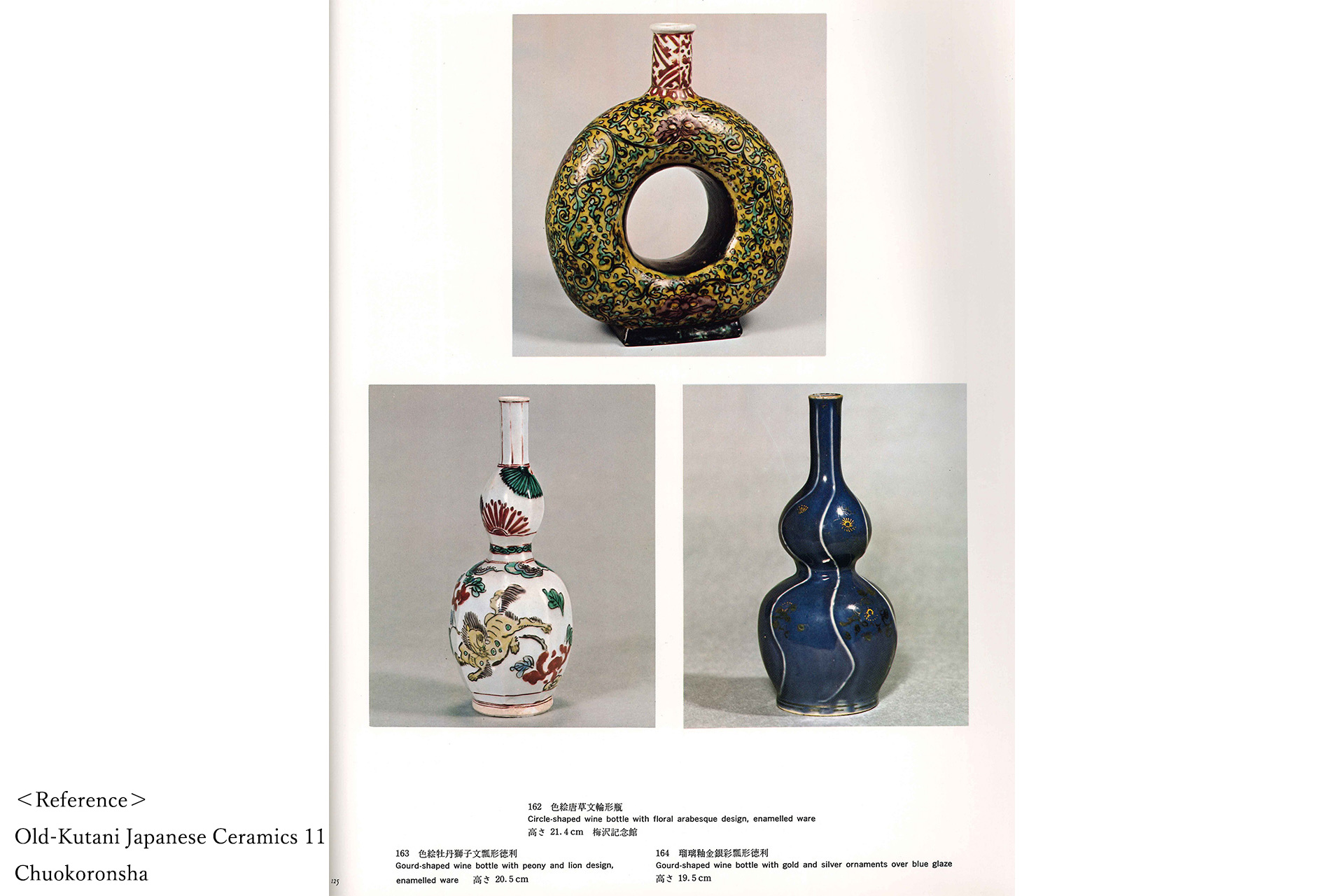It is the old-kutani gourd shaped bottle modeled after the "Shonzui" from the late ming dynasty in china. The jewel like lapis lazuli color sparkles beautifully, and the white lines add variation to the shape of the bottle. Large work is rare, and similar examples can be found in celadon. Even in the history of imari, old-kutani produced excellent bottles, and among them, the gourd shaped bottles are particularly highly praised.
Inquiry
- Product Code
- 230903-13
- Period
- Edo Period
Middle 17th century
- Weight
- 1,183g
- Body Diameter
- 15.9cm
- Top Diameter
- 2.7cm
- Height
- 31.1cm
- Bottom Diameter
- 10.1cm
- Description
- Old Wooden Box
- Condition
- Excellent Condition
There is a adhesion at the body
It meets the requirements of sophisticated and rigorous modeling, beautiful glaze, excellent work. The adhesion of the body that occurred during the production process is carefully polished. It is presumed that there was originally a plum and paulownia design of gold and silver, but there is no sense of incongruity.
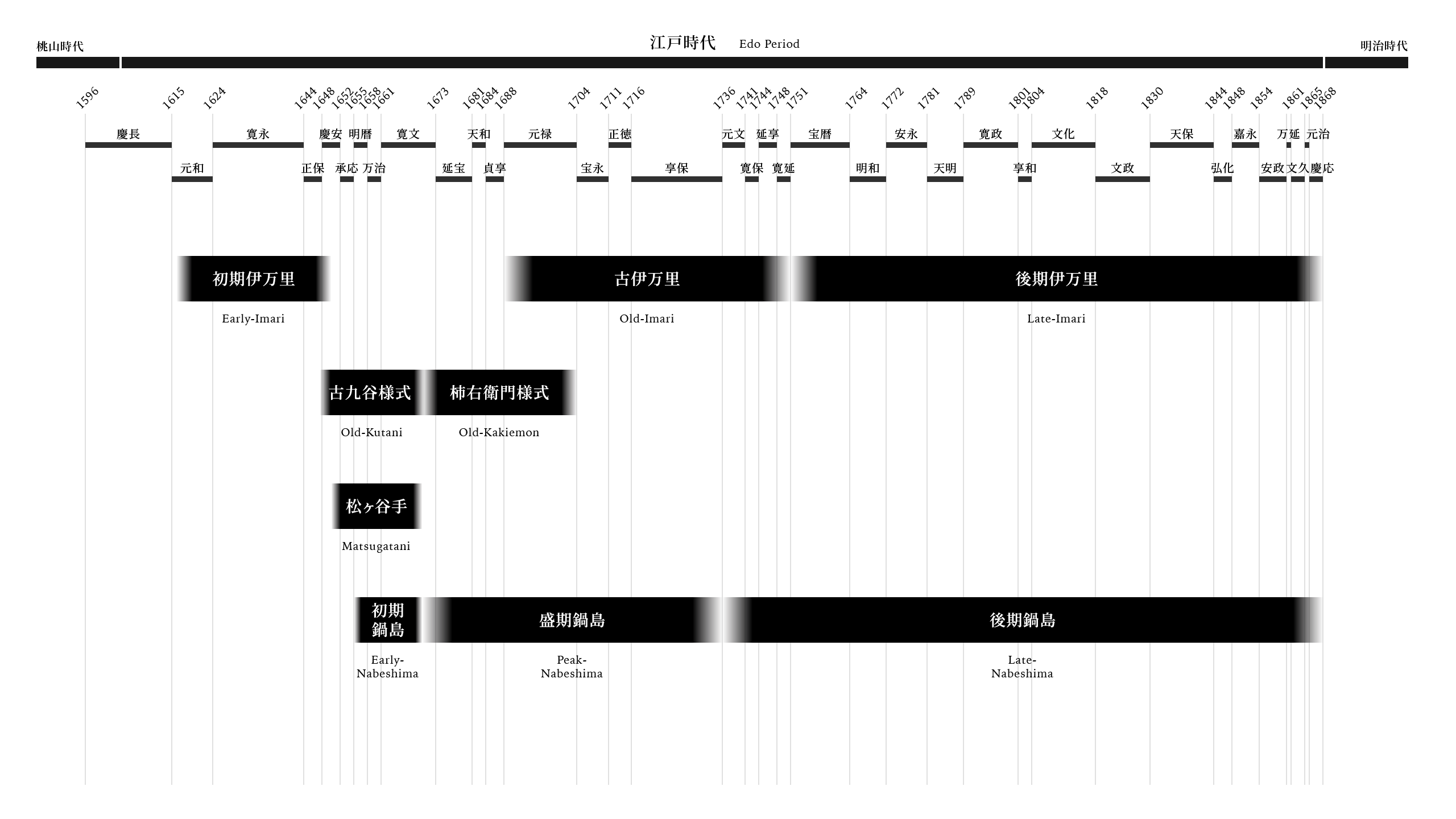
The gourd shaped body is lined with white mud in a curved manner, making it appear as if it were twisted. Because the glaze layer is thin in the raised areas, the base material is visible, and the white lines and shading of the glaze color make the shape even more distinctive. The gourd have been considered lucky charms since ancient times, and have been widely used as talismans to ward off disasters, bring good fortune, and ward off evil spirits. It also has the meaning of “Prosperity of Descendants” because the vines grow and bear many fruits.
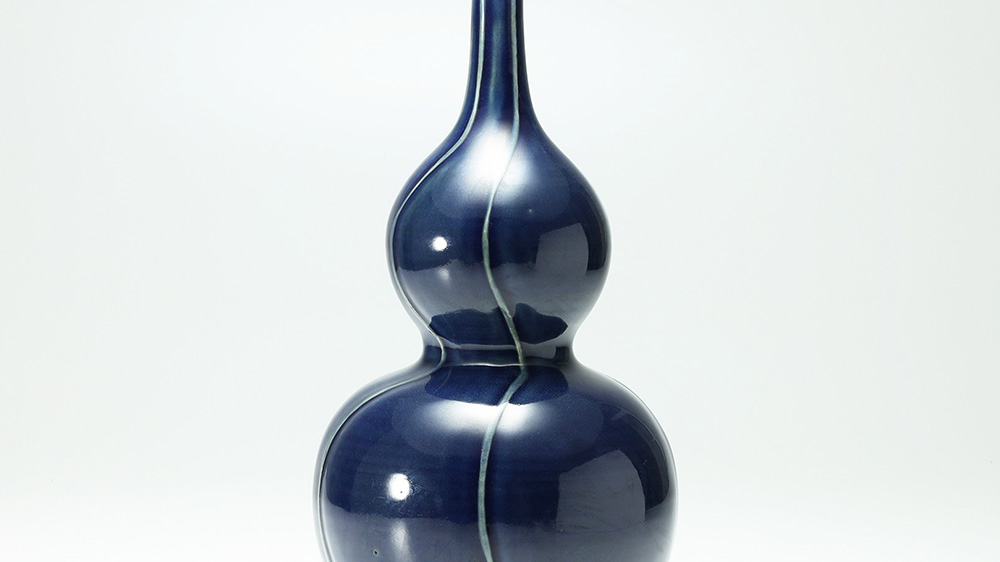
Cobalt blue glaze is made by mixing cobalt as a coloring agent with transparent glaze and firing it in a reduction flame to obtain a vivid navy blue color. This gourd shaped bottle is modeled after the “Shonzui”, which was fired in the jingdezhen kiln in china at the end of the ming dynasty. In the 1640s, the civil war that accompanied the change of the ming and qing dynasties forced the suspension of overseas exports of jingdezhen porcelain, and as a result, demand for alternative domestically produced high quality porcelain rapidly increased in japan.
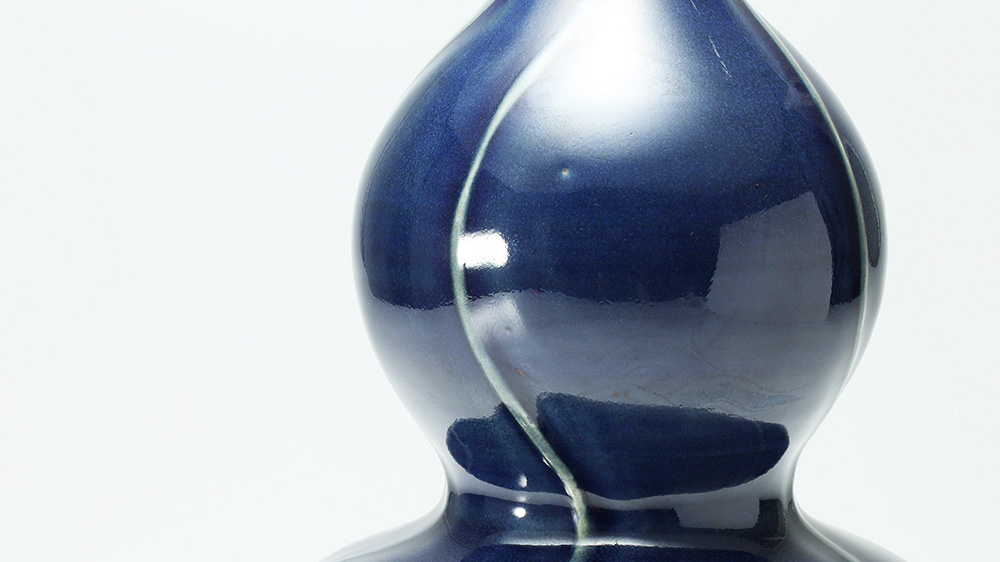
It is thought that plum blossoms and paulownia designs were painted on the surface using gold and silver, and there are also faint traces of red painting. Pottery fired using kinginsai, a technique of coloring with gold and silver, probably began in the Meireki era(1655-58). The use of silver coloring declined in the 1670s. One reason may be that when coloring with silver, the silver oxidizes over time, eventually turning into a darker color. The texture of the surface looks like it was made with a single color(cobalt Blue glaze), and there is no sense of discomfort at all. The previous owner may have been fascinated by the beauty of the elegant dark blue cobalt Blue glaze and removed the color.
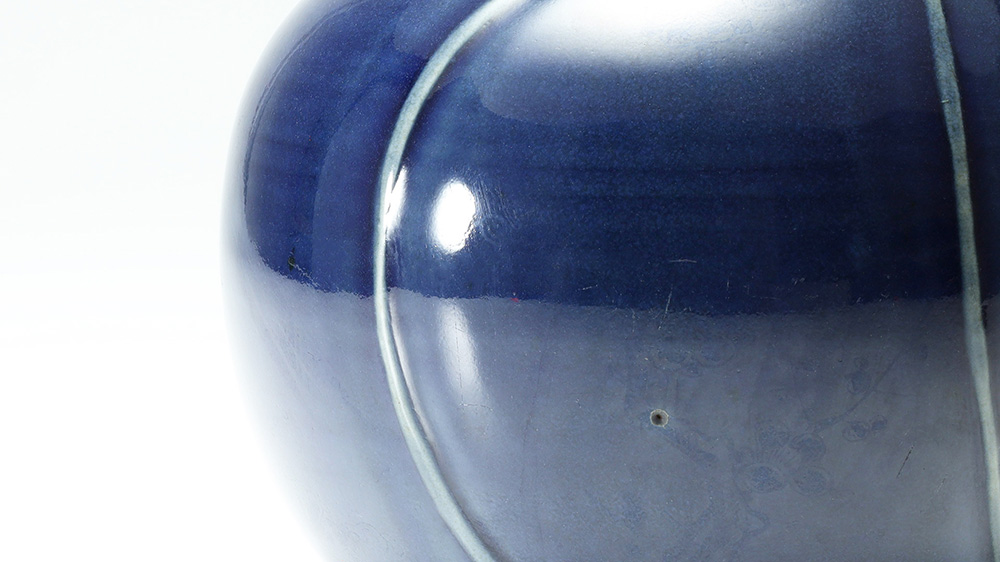
There is mark on the body from contact with neighboring work during the production process. This type of cobalt Blue glaze work was considered a special high class work, so it was shipped as a qualified product. This area has been carefully polished.
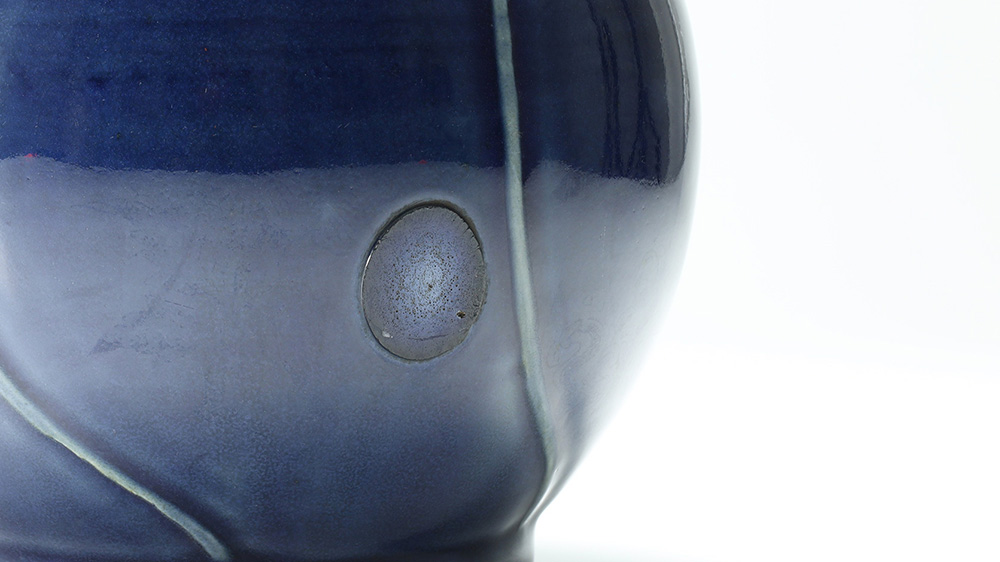
You can also see a glimpse of high technology in the sharp and neat mouth construction. You can pour the right amount by collecting sake in the bulge on the top. It is thought that it was used at luxurious banquets by feudal lords.
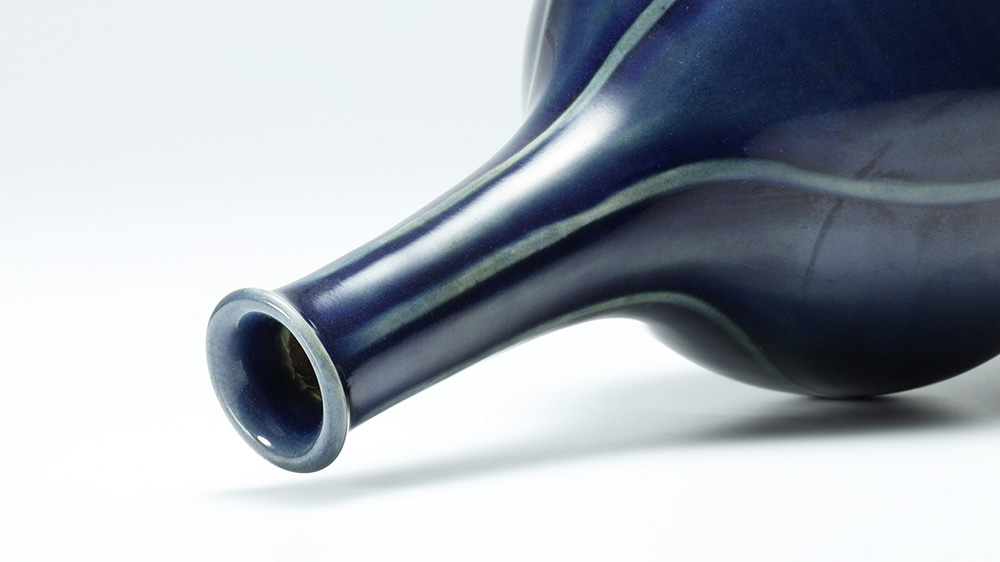
The bottom has a transparent glaze, allowing you to see the high quality white porcelain. The contrast between navy blue and white looks beautiful.
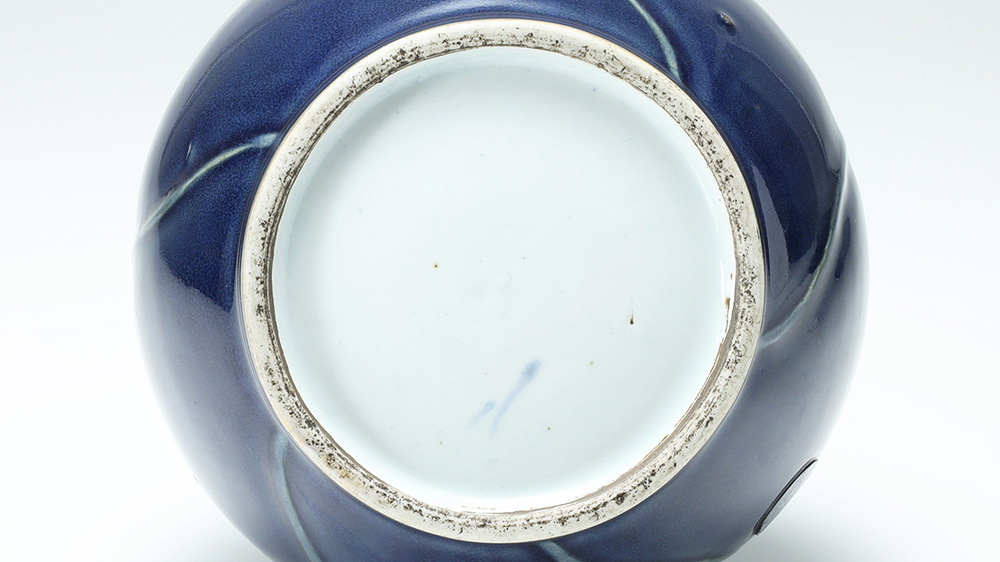
Old-Kutani
Old-kutani is a style of imari ware developed in arita, hizen(current saga prefecture), in the early edo period. In the 1640s and 50s, the overglaze enamels technique was introduced to imari ware, which before then was primarily blue and white pottery. Thanks to this dramatic change in technique, early-imari was developed into “Old-Kutani”. Overglaze enamels porcelain, which was originally created by imitating chinese ceramics, developed independently in japan, and in addition to the bright dishes designed for dinner parties, there were also a lot of works created for tea ceremonies and kaiseki. Some pieces were made with noticeably higher quality color painting technique, and it is thought that artists of painting may have contributed to making these pieces. The number of works with inscribed name grew dramatically, and a wide variety of inscribed names were used, such as “Kakufuku” or “Homare”. Since the dishes being made had become wider, in order to prevent the middle of the dishes from sagging during firing, a technique was developed that involved adding cone shaped supports made out of the same material as porcelain called “Hari”. Early-imari dishes had smaller bases, so there are very few pieces that show signs of the use of these “Hari,” other than large dishes. Iroe(overglaze enamels)old-kutani have a magnificent, powerful character, and due to their unique design style and thick, oil paint like coloring, for a long time it was commonly believed that they were produced in kaga(current ishikawa prefecture)- this is known as the kaga theory – but after several pieces of overglaze enamel pottery in the old-kutani style were found in the remains of old kilns in arita, the hizen theory, which claims that they were fired in arita, hizen(saga prefecture), became more prevalent, and this is the mainstream view today. Thanks to the strenuous efforts of hizen potters in the middle 17th century, these beautiful vessels still exist today, and rival jingdezhen porcelain, which is said to be the highest quality porcelain in the world.



